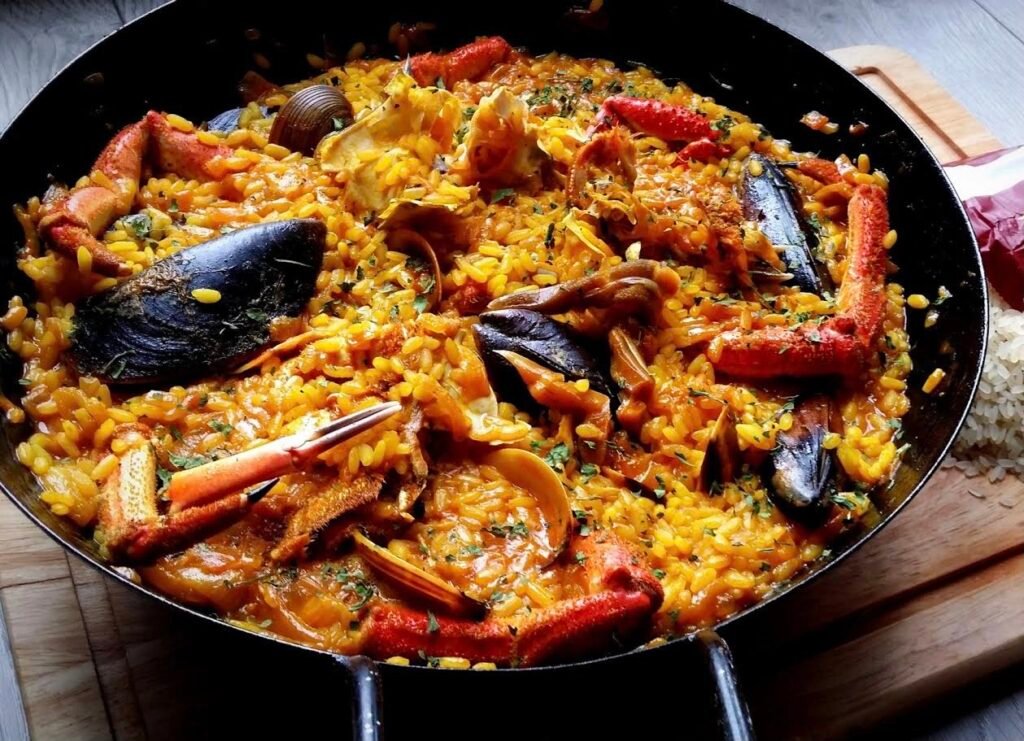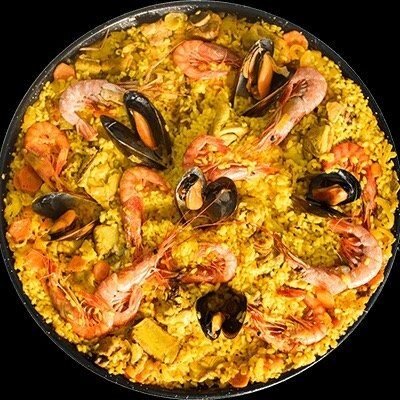Welcome to Paellita’s, The Easy Paella, definite guide to everything related to Paella.
Our goal is to popularize our iconic dish even more, with a product that allows everyone to cook the most amazing Paella in just 20 minutes in a very easy way, while enjoying the beauty and benefits of the Ritual of Paella.
That is the reason why we have created the definite hub for everything surrounding the beautiful Paella: its history, recipes, equipment, and most importantly, its values and importance as a social event.
Put an end to all the chaos and noise surrounding our most famous dish, creating a cohesive, profound yet simple guide while transmitting the love and passion we have for Paella, a gastronomic jewel that we want everyone to enjoy fully.
So it is an honor for us to welcome you to the most complete guide you will find about Spain’s Most Famous Dish, the great Paella.
We have created what we believe is the ultimate guide to know everything that is relevant about the great Valencian dish. We will discover Paella’s history and origins, how to cook one, what is the right type of rice and the best equipment and accessories to become a true Paella expert.
Also, if you are looking for the authentic Paella recipes, we have prepared a specific guide as well that you can find here.
On All Things Paella you will find:
Index
What is Paella: Spain’s Most Famous Dish
Everybody knows about Paella, not only Spain’s most iconic dish but probably one of the most famous dishes in the world as well. But in reality, very few know the real origins and history on how Paella became so popular worldwide (besides its amazing taste!).
Here you will find all the information you need to become a true Paella connoisseur.
Where Paella Originated From

As we all know, Paella is a famous Valencian dish, but why did it originate there?
Paella originated in La Albufera, in the east side of the country near Valencia when, during the Arab period, rice was introduced to the Peninsula in the 12th Century. Due to the particular combination of the land of high humidity, sun and soil, it made it the perfect place to grow the cereal.
It is important to notice that, along with rice, the Arabs also introduced Saffron, one of the key ingredients of our famous rice, creating the base for what was to become the incredibly amazing Paella.
How Paella Started
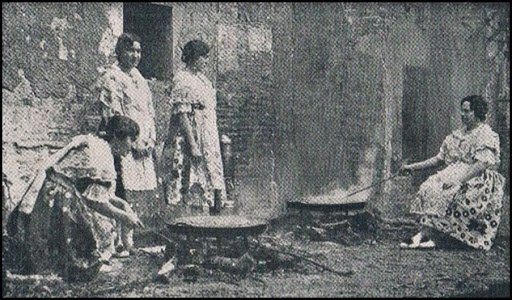
The first documented reference of the recipe known as “Valencian Rice” dates from 1520 a.C. , found in some written recipes in the book “Llibre de Coch”, that means literally “Cook Book”, as part of the book of recipes of King Ferdinand of Naples.
But how Paella originated in Spain is far from having Royal credentials, since it started as the dish that the common people from La Albufera started cooking by using the rice they were cultivating and mixing it with the local ingredients they could find.
Traditionally, these ingredients were the classical mediterranean ingredients of the area: green beans, artichokes, garlic, onion, olive oil, salt and peppers. Plus the small animals that lived in the area such as chicken and rabbit, or fish and seafood from the Mediterranean sea.
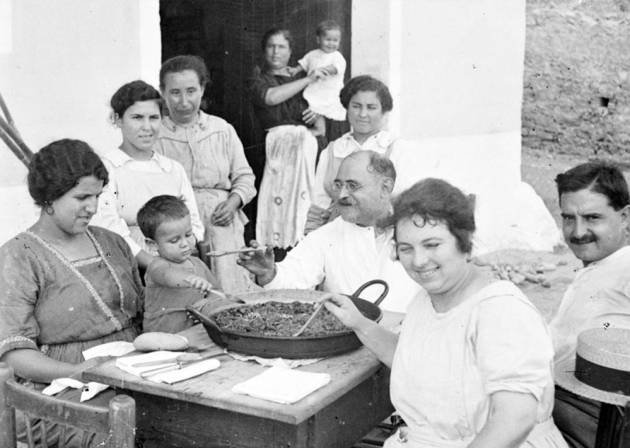
Thus it is attributed to the housewives and working people of humble families that, while the rest of the family was working, they would be preparing slowly but full of love, the rice with all the ingredients they could find so when everybody came from work they could celebrate some quality time together.
Obviously, depending on the time of the year, the ingredients would vary, but there would always be one constant: the Valencian rice.
It’s very own type of rice that due to its proper characteristics of its starch, exclusive from the land of Valencia, it became the perfect rice because of how it sucks the base from the slow cook and ingredients, allowing the rice to have the most intense and delicious taste and texture.
How Paella Became so Important and Famous
As we have seen, by 1520 Paella was already a favourite of the King of the Time, Ferdinand of Naples. It is thanks to that step to the higher classes that Paella started its journey to become one of the most famous dishes in the world.
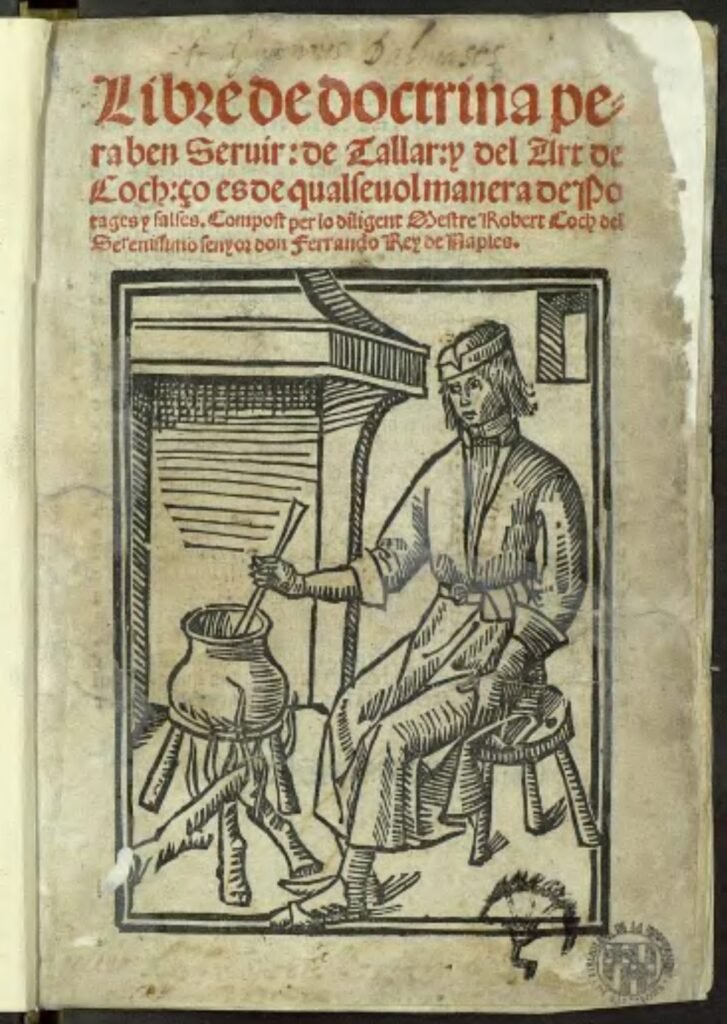
Although there is not full proof of it, it is thought that its first really intercontinental experience came from an expedition from the Japan Royalty who, when coming to Spain, were delighted with what was then known as “Valencian Rice”, a rice dish of extreme quality and taste, thus inaugurating its international awareness.
It was later found, in 1818, when a text is published that makes reference to the importance of how rice is being cooked in Valencia as opposed to the rest of the world and why: by being able to properly dispose of the right amount of water to a well distributed rice, cooked in a very slow fire with high quality ingredients.
Due to the success of the Japanese Royal expedition, the “Valencian Rice” started being used as the dish for events and official receptions. As a matter of fact, in the 19th Century, Paella became the official dish for diplomatic events, and as a result, it became a symbol of Spain due to its amazing taste.
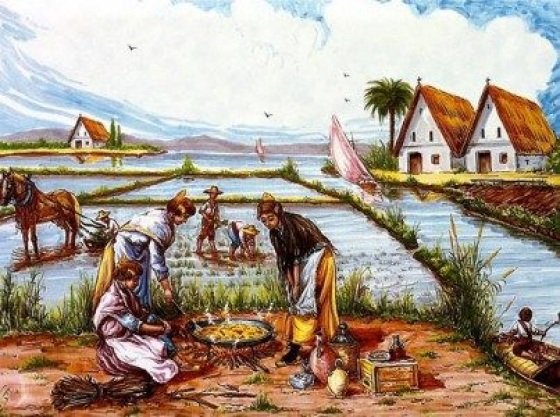
Such was the importance of the dish as a diplomatic element, that it was shown at different international expositions. As a matter of fact, it is then when Paella started its international expansion and success by making a presence in the 1851 London Exposition,as well as in Paris in 1867 or even Philadelphia in 1876.
By that time it was still known as “Valencian Rice” and it is believed that the term “Paella” was coined after explaining to the Prince of Wales the importance of the pan as a key element in the elaboration of the dish.
As a curiosity, Paella then became widely popular, and it is even known that US President Franklin D. Roosevelt used to delight himself with Paella and the restaurant “Delmonico’s” in 1910.
The final explosion in its popularity came when, in the 1960s, during Franco’s dictatorship Spain opened its borders, and started becoming the touristic household that it is today, Paella was introduced to the millions of tourists that came to our country every year.
How Paella is Made
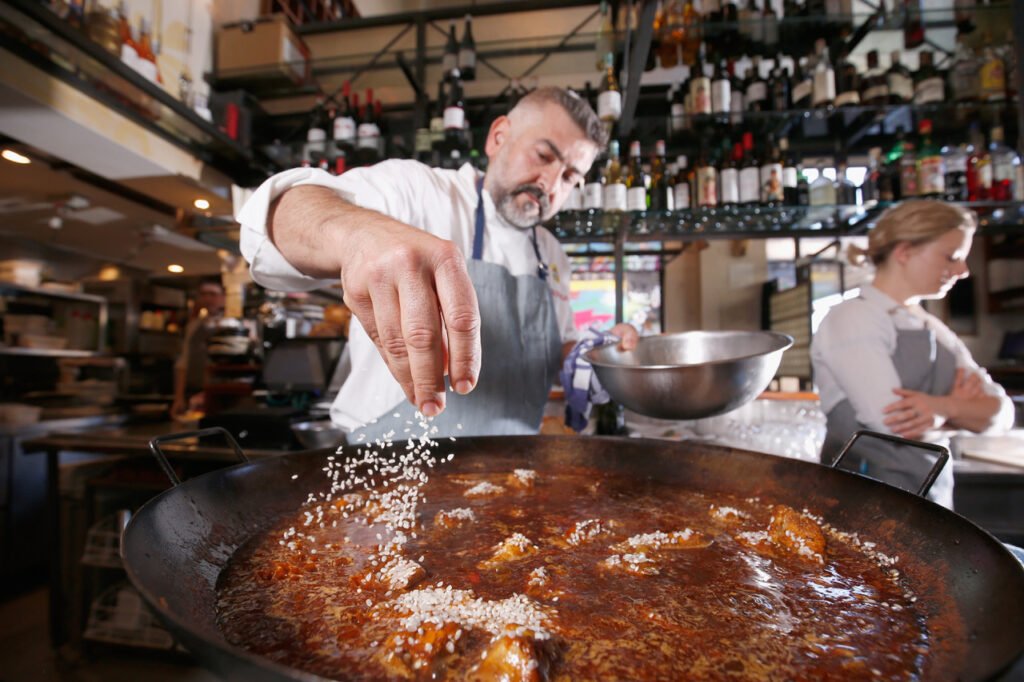
Because cooking a Paella is full of mystique and confusion, we now are going to explain Spain’s most famous dish in a full guide.
We will learn the basics so you can understand how a real, traditional Paella is cooked, its ingredients, and learn its true process and secrets.
And at the same time we will learn how with Paellita you will be able to cook an amazing Paella, as good as a traditional, in a much easier process: in just 20 minutes and 6 steps but without compromising any of the quality.
Also, if you are looking for deeper information on the traditional recipes, you can find our guide for that here.
What are the Ingredients of Paella
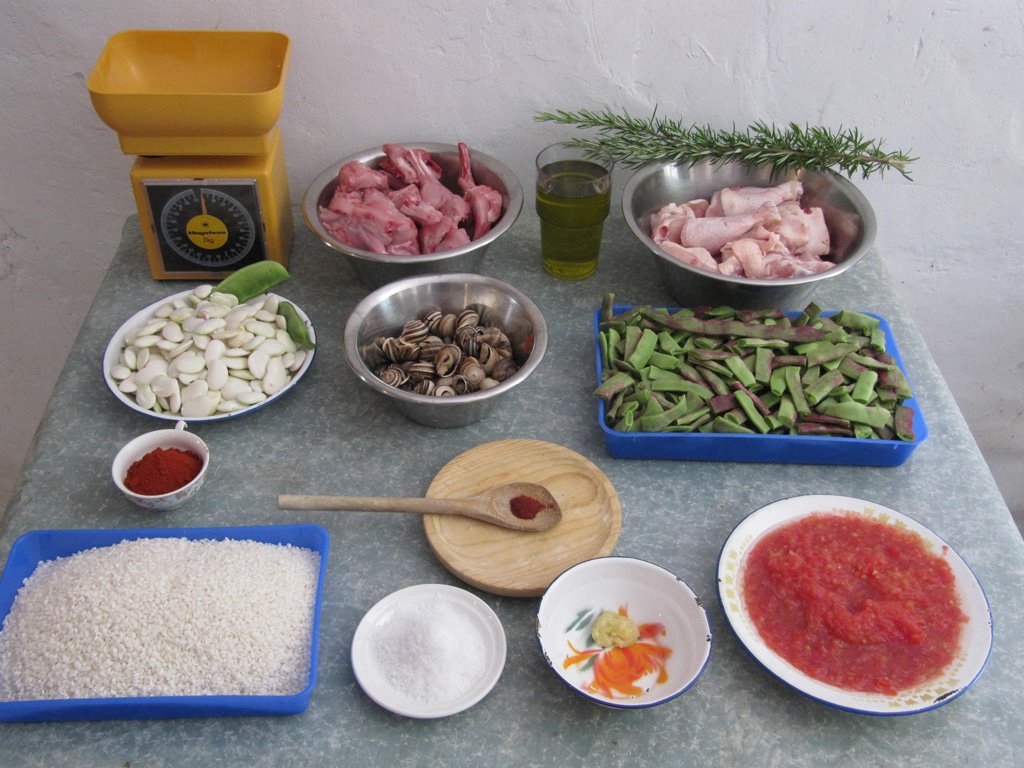
So then, what are those ingredients that the people of Valencia started using to create what’s now one of the most iconic dishes in the world and without a doubt Spain’s most famous one?
Well obviously as we have mentioned above, those that are part of the landscape of Valencia, being the most important and fundamental ingredient the rice. The most universal food and clearly the one that has brought more people together in this world.
As you can read in our post, Paella tastes much better when the right kind of rice is used, due to its particular properties when absorbing the base. That is the Bomba rice variety, the original rice from the Valencian landscape.
But what other ingredients are used in Paella? As well as the rice, the rest of the ingredients are typical of the Valencia area.
- The Basics:
– Bomba Rice
– Extra Virgin Olive Oil
– Salt - The animal protein:
– In the case of meat or Valencian Paella, it would basically be small animals, chicken and rabbit.
– In the case of fish or seafood Paella, those of the Mediterranean Sea, such as mussels, squids, shrimps and fishes like monkfish.
- And the vegetables. The classical ones from the land were:
– Green beans and a particular type from Valencia bean, the “garrofón”
– Green and red peppers
– Tomato
– Artichokes
– Garlic
– Onion
– Basil
These ingredients have been the base for Paella since its origins and are still the most traditionally ones used.
How to Cook a Classical Paella
We are now going to review the process of the traditional way of cooking a Paella.
A recipe that involves skills and time, since it takes a good amount of time of preparation and the right touch to properly balance the different ingredients in order to obtain a well, evenly made rice.
As we have explained in our previous historical post, “What is Paella”, it was a dish that ,when people used to go to work, 2 or 3 of the workers or family members would stay back home just collecting the ingredients and cooking them so by the time everybody came from work, they could celebrate life while sharing the amazing dish.

Thus, Paella is a dish that requires Patience, Attention and mostly Love, since it is cooked at a very low fire, synonym of knowing how to live, and for others in mind, symbol of sharing.
So let’s dive now into the process of how to cook a true authentic Paella. And when we talk about an authentic version, we are talking about the most pure and traditional version of it.
Keep in mind that it usually takes about 2 hours to cook an authentic Paella and a good, earned set of skills… So, why so much time?
Because that is the way for the base to obtain the right creamosity and texture from all the ingredients so that when adding the rice, it will integrate the starch of the grain, giving it its beautiful and delightful taste plus its iconic texture.
The Step by Step Guide for the Traditional Paella Cook
Since we understand that Paella is a dish full of mystic and confusion, we have developed the ultimate guide to understand how to cook a traditional spanish Paella, as usual, in an easy and simple way.
Here you will find the basic general steps to prepare a delicious Paella as well as the ingredients needed for the traditional recipes, because the principles are the same regardless of the ingredients:
- Meat or Valencian Paella
- Fish or Seafood Paella and
- Vegetable Paella.
However, If you want more specific information about the recipes, quantities and kind of specific ingredients, you can check our Recipes Guide.
Plus some extra advice that will help you prepare the most amazing rice, the glorious dark and crispy “Socarrat”, the most precious prize of Paella rice.
Keep in mind that while these guidelines are made for you to understand the whole process of cooking a classical Paella, with our Paellita base you will only need to focus on the ingredients and our 6 Easy Steps for you to make a fantastic Paella and in just 20 minutes!
The Five Classic Steps
Essentially, we can say that in order to cook an authentic Paella, we can divide the process into 5 main steps:
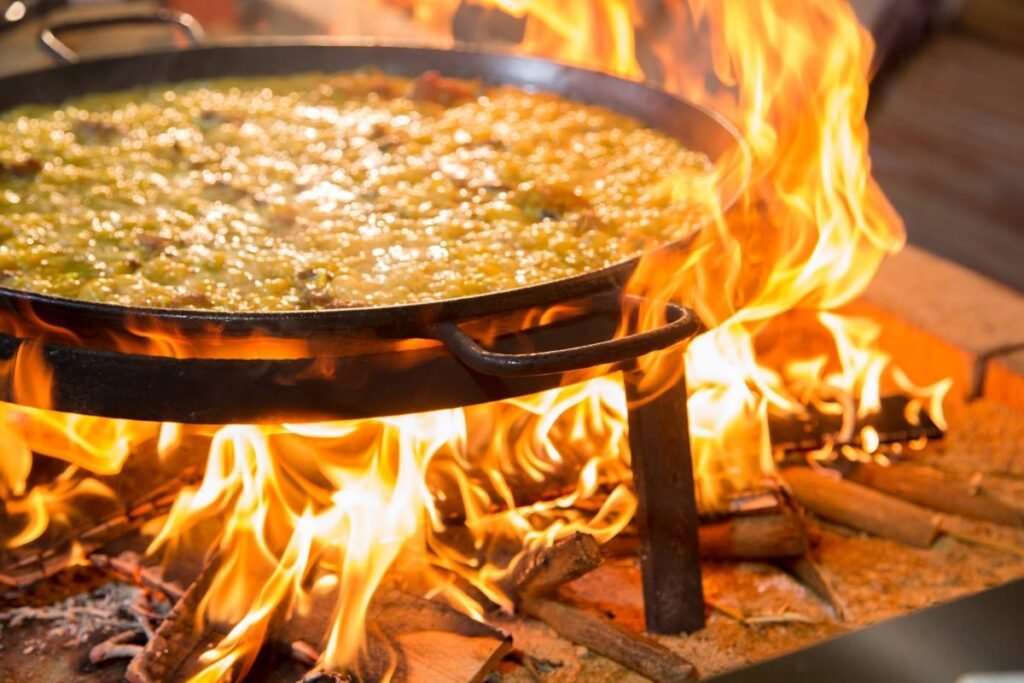
Step 1 – Prepare the Fire
Time: 5 minutes
Usually Paella was cooked with wood, but in the modern times, for practical matters, it is common to use a classical gas equipment and a Paella pan. Keep in mind that the traditional way of wood will give the Paella a richer taste due to the woody flavour and aroma.
When starting the fire there is only one important thing to know: it has to be a low fire, for the ingredients to be cooked slowly so the base can be created with the right flavour and texture.
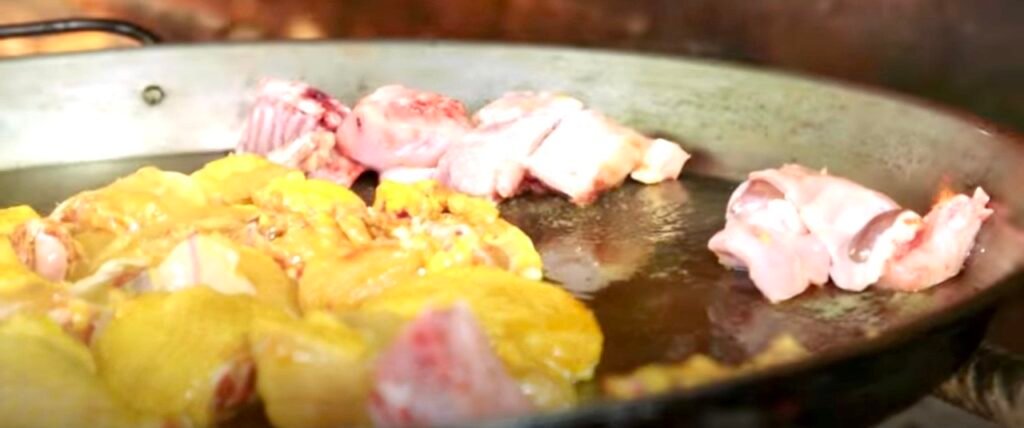
Step 2 – Adding the Protein
Time: 45 minutes
Once we have started the fire, it’s time to add olive oil and salt that will create the base where the ingredients will deposit its flavour that will later be sucked by the rice (we will repeat this when adding the meat so it doesn’t splash us).
After adding the olive oil and salt, it is time to add the animal protein, whether its meat or fish (chicken, rabbit, chorizo, fish, seafood, etc) and season it with a little salt.
Fry the meat or fish until it is lightly browned and season with a little salt once again. We continue to fry until the meat is well browned and let cook at low fire for 45 minutes.

Step 3 – Add the Vegetables
Time: 45 minutes
Once the protein has started to cook, we must make space for the vegetables by separating the protein, and then it’s time to add the beans and vegetables.
If the beans are dry, it is recommendable to soak them overnight with water so they hydrate. We then drain the beans, remove the tips of the green beans and cut each bean into three pieces (we can do it by hand).
Add the rest of the vegetables, season with a little salt and fry. Add the grated tomato and continue to fry.
The reason for this way of procedure is so the vegetables can mix with the protein and olive oil, creating the famous cremosity of the base that will later bathe the rice and give the Paella it’s celebrated texture.
We add the rest of the ingredients and let it cook at low temperature.

Step 4 – Add Water
Time: 2 to 3 minutes
Once the ingredients have mixed properly with the olive oil, it is now the time to add the water so the right base will be created.
It is of critical importance that the pan is well balanced so water is equally distributed for the rice to be cooked. Remember that this is a dish to be shared, and we want all of our guests to have the same experience!
Add the sweet paprika and stir immediately so that it does not burn. Then we add the water to cover the rivets of the handles.
It is at this moment when we must raise the temperature until the water starts boiling and we add saffron, plus the coloring to taste and rosemary just a bit before we add the rice for about 2 to 3 minutes.
When the paella base has cooked for 25 minutes, remove the rosemary and we will see that the base will be just below the rivets of the handles. If necessary we will rectify the salt.

Step 5 – Add the Rice
Time: 20 minutes
Now that water is boiling, we add the rice in an evenly manner through the pan and distribute it equally. We must now again lower the temperature and let it cook for about 20 minutes: the first 5 minutes over high heat and the remaining 15 over medium-low heat.
After those 20 minutes, we will turn off the fire and let the rice rest for about 5 minutes so that it finishes calmly and firmly and, if possible, covered with kitchen napkins.
Before serving at the table we can decorate with lemon and a few branches of rosemary.
Remember that with the right rice, the Bomba rice, we will ensure ourselves that the Paella has the right taste and texture, dry and loose.
Extra Step – The Socarrat
If after the 20 minutes, we let the lower layers of rice dry, it will burn a bit and get dark and crispy, but we will have the famous, celebrated and highly demanded “socarrat”! You can read more about it on our own “socarrat” recipe post here.
So here it is, the classic steps when cooking the traditional recipes for the authentic Paella: meat or valencian Paella, fish or seafood and vegetable.
Also, for a more simpler, cut to the point, straight guide on the process on how to cook Paella, check out our Practical Guide to Cook Paella in the Paella Recipes Guide.
Video on How to Cook a Classic Paella
If you prefer, let’s let Chef Toni Montoliu, a local legend of Valencia, show us how a real and authentic Paella is made:
Discover Paellita, the Easy Paella
Through our beautiful guide of a traditional Paella we have read, and seen, how an authentic Paella is properly cooked, with all it’s process and difficulties.
As you know, it is our goal to popularise even more Paella and it’s wonders, and a big factor for that is to make it easier for everyone to cook one.
So we believe that it is a great moment to show you how our amazing Paellita (pronounced Pae-Yi-Ta, as “little Paella”) will allow you to cook a faster, funnier and easier version of the classic method without any of the complications, yet delivering the same quality taste.
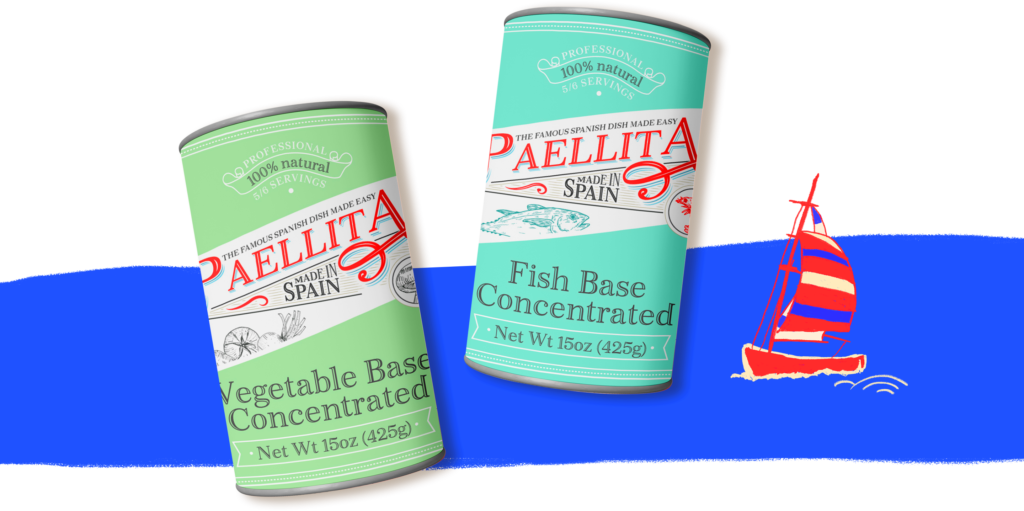
The Easy 6 Steps
We have developed the best base to bring you the authentic taste and quality of a true Spanish Paella, but in just about 20 minutes and 6 easy steps.
Truly the best flavour as if cooked by a real Valencian chef, you will be able to prepare the most amazing Paella for your Friends and Family (up to 6 people per can) without needing to be a professional chef or having professional Paella equipment.
Yet delivering the most outstanding dish, and what’s most important about the full Paella experience: sharing, laughter and life celebrating time, without the long hours and difficulty of preparation.
6 super easy steps to create the most amazing Paella in 20 minutes. Ready?
Step 1 – Shake the Can

Yes, that’s it, just shake the can! Should we even count this as a step?
Step 2 – Dilute the Base with Water

Add 3 times of water to 1 of the base in order to have enough quantity for 6 people and set aside to boil
Step 3 – Stir Fry the Ingredients
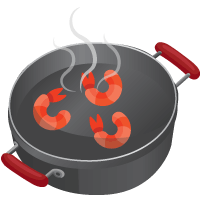
On a separate pan, begin to cook the selected ingredients until they are ready
Step 4 – Pour the Base onto the Pan and add the Rice

Once the base is ready and has started to boil, and the ingredients are cooked, it’s time to pour the base onto the pan and time to add the rice
Step 5 – Cook over High Heat

Once the rice is added, elevate the temperature to high high for 3 minutes so the rice gets an extra push
Step 6 – Reduce Heat and Cook for 15/18 min

Now distribute the rice equally through the pan and let the Paella cook for 18 minutes so the rice sucks up all the base for exquisite taste and flavor, and after those 18 minutes have passed just let it breathe for 5 more minutes… and that’s it!
The Advantages of Paellita
Now that we know how amazing and easy is to cook a Paella with our Paellita’s, let’s find out more about why it is an ideal product for us.
The Most Amazing Quality

Paellita has been conceived as the easy and fun version of a traditional Paella, but at the same time keeping the same quality and taste as the best Paella from Spain.
Don’t get fooled by it’s easiness and simplicity, with Paellita you will be getting the best flavour of Spain’s most iconic dish while taking apart the long and tedious process of cooking one.
While there are other Paella bases on the market, when it comes to quality, our Paellita doesn’t even compare. With Paellita you will be getting a true base, and not just the broth or even soup, that you can find in the market today,
100% Natural Ingredients

A huge and critical point for us, because we know that a proper Paella must not only be delicious but also must be a very healthy one, our Paellita’s are developed only with natural ingredients, free of any kind of artificial conservants or colorants, plus free of gluten or any MSG. With our products, you won’t find any chemicals unlike those you can buy on the market.
As easy as it may be, but as important as anything else, our Paellita’s use the same ingredients that a regular family from Valencia would use for their loved ones (yes, saffron included!).
The Traditional Recipes
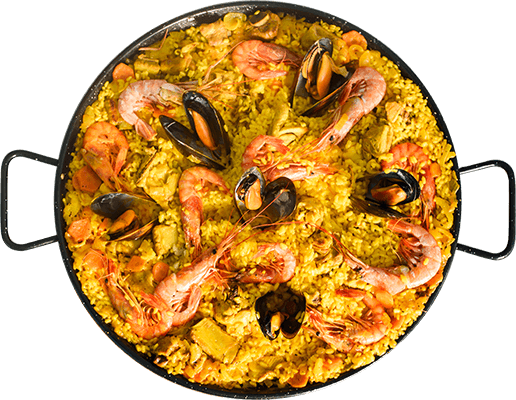
With Paellita you will have the base of the three classic versions of Paella: the meat version or Valencian, based on Chicken and Rabbit; the Seafood or Fish version, based on the typical creatures of the Mediterranean Sea and the Vegetarian version, made with the classical mediterranean. The three basic versions for you to start enjoying an amazing Paella, and that will serve as the base for your own Paella recipes!
The Best Paella Rice

When it comes to Paella, there is another secret behind the quality of the ingredients and the base: the rice. And as you can read in our post, there are only a couple of types of rice that will get you a proper Paella, being the most important one the Valencia grown variety of Bomba Rice.
Valencian rice is characterized by being a short grain rice and very pearly. The pearl of rice is nothing more than a concentration of starch that some grains of rice have of the varieties that allow the best absorption of the flavors of the ingredients. Therefore, with each Paellita pack you will be getting the best rice from Valencia, an excellent conductor of flavor and the ideal rice for cooking Paellas.
Therefore, with each Paellita pack you will be getting the best rice from Valencia, an excellent conductor of flavor and the ideal rice for cooking Paellas.
No need for Professional Paella Pan or Equipment

That’s right! With Paellita we bring you such an easy product that, even though with a proper Paella pan you would be getting a more traditional Paella experience, you won’t actually need any special kitchen equipment, and with your regular pan will be more than enough for you to prepare a beautiful Paella.
Even more, a regular electric pan will work too… so, we are afraid that you have run out of excuses for not cooking a proper Paella for your friends and family!
Up to 6 People
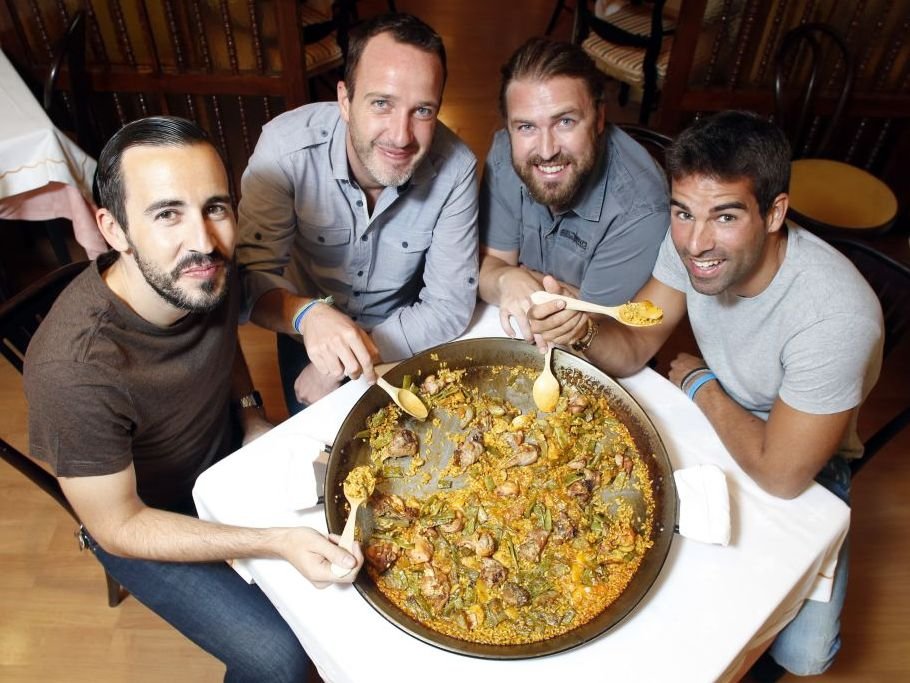
Since Paella is a social dish, our base and our rice are designed so with one pack you will be able to cook a Paella for up to 6 people (depending on the quantity you prefer to serve).
Keeping the essence of the most famous Spanish dish, one that represents the celebration of life and the values of sharing with the people we care most about.
Extremely Easy!
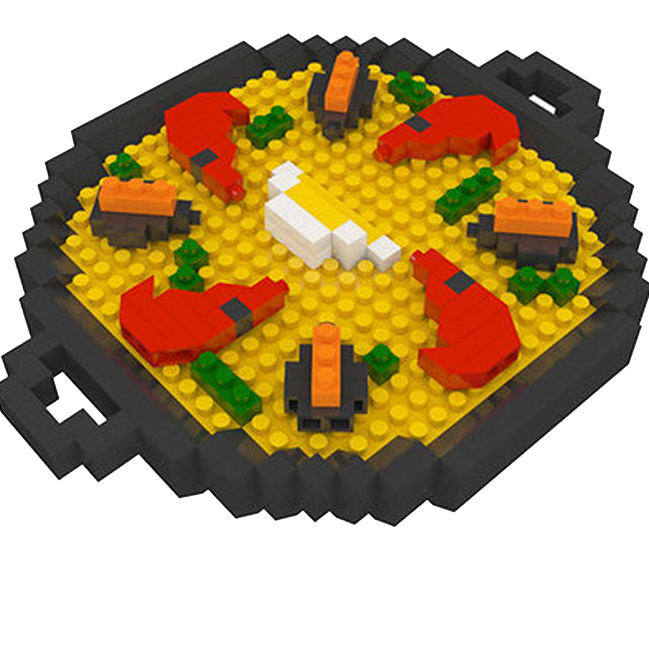
With Paellita you will be able to cook one of the most famous dishes in the whole world, but one that takes a lot of time (more than 2 hours) plus certain skills to be made, in such an easy way that even a kid could do it.
In essence, you will be getting all the positive things about Paella (it’s flavor, it’s taste and texture) without all the negative side of it (the long hours of preparation, the difficulty of getting the base right, the right equipment, etc)… basically, it’s a win!
What is the Best Paella Rice
The Ultimate Guide to Understand which is the Best Rice for a Great Paella

Rice, without a doubt the most international and universal food of all.
A part of every culture and gastronomy in the world, and a basic ingredient of many peoples diet. But since there are many types of rice, is it important to have a determined type when it comes to Paella?
Let’s look in depth at what kind of rice we can find throughout the world and in history, how rice developed in Valencia, and why the classical Valencian rices are the best for Paella, particularly the famous Bomba Rice.
The Importance of the Grain
As we know, there are thousands of different varieties on the market. But what makes a long grain, once cooked, firmer and looser than a round grain of rice? Why do glutinous rices acquire that uniform pasta image that allows us to shape them to our liking?
The answer is in the starch of the grain.
But unlike the common knowledge that circulates around, it is not about the amount of starch that each variety contains.
For example, Basmati grain has the same percentage of starch as that of Bomba rice, yet their uses for Paella are totally different. It is not therefore the amount of starch that matters, but the nature of the starch that helps us predict the behavior of each variety of rice in the kitchen.
There are two ways starch can be present in the grain: either in the form of amylopectin or in the form of amylose. The percentage of amylose or amylopectin that the grain has will depend on the organoleptic qualities (in essence the way it creates a sensorial perception) of the rice once cooked.
Luckily for us, nowadays the relationship between the amylose content and the functional properties of each variety has been technically and scientifically demonstrated.
Thus, there is a positive and proven linear correlation between the consistency and retrogradation (return of moisture that produces stickiness) and a negative correlation between the adherence and viscosity.
In essence, the response of a rice in the kitchen is directly linked to the amylose and amylopectin content of the grain.
Amylose causes the grain to decrease its wettability and the tendency for the grains to remain loose after cooking. It gives hardness to the grain, leaving a more consistent rice, and low humidity while chewing. The creaminess of the grain is slowed by the amylose, as well as its stickiness and its contrary to its dis-integrability.
In essence, we can affirm that varieties rich in amylose (percentages between 25% and 30%) tend to give dry cooked grains, rather hard and even harder when cooled. Therefore these are dry grains, referring both to their wettability and their humidity.
As a result, when we introduce them into our mouth and before chewing them, we will find that their surface is little or not at all humid (we are talking here about wettability), and when we chew them we will find that they offer us a rather dry food feeling (we are referring to humidity).
This low humidity and wettability clearly translates into low flavor absorption capacity. However, we will have firm and loose grains, which have expelled few soluble solids to the water and therefore will give clear broths when cooked in excess of water.
On the contrary, varieties low in amylose and rich in amylopectin will give us grains with a certain degree of wettability and humidity. These are grains with a greater capacity to absorb flavor, much less hard, with a greater tendency to adhere to each other.
Once compressed with the molars, the low amylose rice varieties will give us a creamy paste, which will allow the flavors to express until the last moments of swallowing. Grains excessively low in amylose will give us varieties with a very high stickiness, to the point of obtaining a paste that is difficult to chew.
Today there are thousands of varieties on the market with very diverse grain compositions ranging from amylose percentages of less than 7% to more than 30%.
| Higher % of Amylose | Higher % Amylopectin |
| Loose grains after cooking | High levels of wettability and humidity |
| More consistent rice | Greater flavor absorption capacity |
| Dry and hard grains | High stickiness |
| Less taste absorption capacity | Expulsion of soluble solids |
| Poor expulsion of water soluble | Ideal for traditional Mediterranean recipes |
| Ideal for salads | Risk of going over, delicate in cooking |
| Resistant to cooking |
Types of Grains
Now that we have learned what makes the difference between the various types of rice, let’s get a little bit more technical and see the many classifications we can find about rice.
Classified by size:
| Type | Length | Width Ratio |
| Long Grain | > 6mm | 2 to 3 mm |
| Round or Short Grain | Min 5.2 mm | < 2 mm |
| Medium or Semi-long Grain | Between 5.2 and 6 mm | < 3 mm |
Classified by the concentration of Starch:
Depending on the concentration of Starch, we will find two different types in the centre of the grain, which you will be able to appreciate while cooking the rice: Pearlized or crystalline.
The pearl is the concentration of starch in the center of a grain. The pearling allows the absorption of flavors during cooking. For example, most of the japonica are pearly. However, not all the grains of pearl rice have indeed pearl.
This leads us to two types of classifications of rice, Indica or Japonica:
– Indica: long and crystalline rice, less creamy firm grain, is loose when cooked, but does not absorb flavor. Examples of this type of rice are Basmati or Tahibonet.
– Japónica: Round or medium and pearly grains, of less firm consistency and greater adherence between grains. They absorb flavors very well, but they pass easily. Their gelatinization fringe makes them extremely fragile to excessive rest.
As you have probably guessed, this categorization corresponds to the culinary differences in rice preparations between two types of cuisine, Asian and Mediterranean respectively.
Classified by the Industrial processing:
– Rice in shell: Mowed and threshed. It is not sold to the final consumer.
– Whole grain rice: Without shell but with pericarp (Brown leather).
– White rice: White grain, which is the most commonly used.
– Steamed, parboiled or parboiled rice: Subjected to a process of pressure and temperature in an integral way. Once bleached, according to the usual process, it is not passed when cooking even if there is overcooking.
– Quick cooking rice: Precooked, we find it with different presentations and final cooking methods. It usually comes alone, with spices or mixed with other ingredients.
And finally, a classification of the different grains by their percentage of amylose:
TABLE OF PERCENTAGES OF AMYLOSE IN RICE
| VARIETY | TYPE | % AMYLOSE |
| GLUTINOSE | JAP | 0 |
| VENERE | JAP | 16.57 |
| ARBORIUM | JAP | 17.3 |
| SENIA | JAP | 18.2 |
| BAHIA | JAP | 18.6 |
| BALILLA X SOLLANA | JAP | 19.3 |
| TEBRE | JAP | 20 |
| LIDO | JAP | 21 |
| CARNAROLI | JAP | 22.2 |
| VIALONE NANO | JAP | 22.8 |
| BOMBA | JAP | 23.1 |
| PUNTAL | IND | 23.4 |
| JAZMIN | IND | 24 |
| BASMATI | IND | 26 |
| TAHIBONET | IND | 28.3 |
In summary, and depending on the rice we want to cook, to obtain maximum gastronomic satisfaction we must remember four fundamental aspects:
- Choose the right rice for each dish.
- Serve the rice at its doneness.
- Give it the ideal flavor point.
- Getting the oil point
Now that we have learned what’s important and what we must look for in a grain of rice when cooking Paella, let’s get a bit deeper into how rice developed in Valencia and what are the most important types.
The History of Valencian Rice
As you can read on our previous post, Valencia enjoys the privilege of being recognized as the area of Spain where rice began to be grown.
This happened in the 8th century AD. with the arrival of the Arabs to our Peninsula. It is proven that the first rice plant in Valencia was developed on the shores of the Albufera lake, specifically in lands that today correspond to the municipality of Sueca.
In the definitive formation of the rice fields that exist today, the hand of man played a very important role, specially due to the intensive Paella-oriented labor of the land from the end of the 19th century to early 20th century.
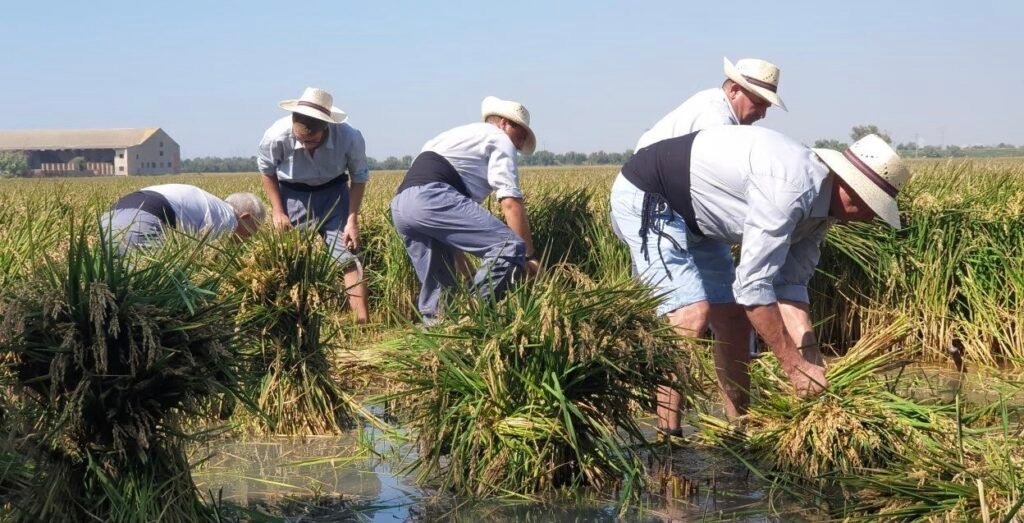
Thes practice in question consisted in the extraction, with extraordinary effort and without the use of machines, of land from the center of the lake and transfer it to the shores, creating the swampy land that rice needs for its development.
In this way, the surface of the lake was reduced while the extension of the rice field increased. Eventually rice turned out to be a very profitable crop and thanks to it, it was developed for centuries by an entire society.
That is why it is very important to recognize the Denomination of Origin “Arroz de Valencia” (Valencian rice), which covers the rice lands that are located in the Albufera de Valencia Natural Park and the Marjal de Pego Oliva.
Of the more than 100,000 varieties that exist today, the D.O. Rice from Valencia protects, among others, the varieties of rice type japonica, Senia, Bahia, Albufera and Bomba, as they are traditional in the growing area and are the ones that best adapt to Mediterranean cuisine.
In general, and as we have seen, the japonica varieties, with lower amylose content, are the ones that best conduct the flavors, the ones that best integrate into the cooking broths and present a texture more in line with Mediterranean tastes, and Paella in particular. The indica-type rices, with longer and firmer grain, have worse flavors due to their higher amylose content.
It is important to highlight that “D.O. Arroz de Valencia” carries out strict controls that allows to certify, package by package, the origin of the product, its quality, varietal purity and traceability, to guarantee the consumer a product with the flavor of tradition and total guarantee of quality.
Main Varieties of Consuption and Cultivation in Spain
Let’s look now in depth at what the most used grains when it comes to Paella, but also a greater look into the vast variety of rice that we may find in Spain:
– Bomba: The most famous of the Valencia rices for Paella. It is more characteristic because its yield is lower than other varieties. This low yield is due to the greater height of the plant, which makes it easier for it to lie down and, it’s also more sensitive to the attack of fungi that greatly reduce production and has a higher proportion of husk. Its most notable advantage in the kitchen is that it does not open, and when this happens, it does so transversely, not longitudinally. By keeping the grain hard and loose, even subjecting it to overcooking, the rice does not pass even if we let it rest. This is because, despite being a japonica variety, it contains a large amount of amylose, so its behavior is close to that of indica. It takes between 17 and 20 minutes to cook.
– Sénia: One of the most characteristic of Valencian cuisine and its rice fields. It has a high amylopectin content so it absorbs the flavor better than any other, and its texture is very creamy. Its main drawback is its low resistance to overcooking, which causes it to open at its ends. It is a rice that is usually marketed as round rice and cooks for 13 to 15 minutes. Currently the cultivation of Senia has decreased in benefit of the J.Sendra variety, an evolution of the Senia variety that has the same organoleptic qualities but gives a higher production.
– Bahía: It is cultivated very little, and similar to what happens with Sénia veriety, the Regulatory Council allows its mixture.
– Balilla x Sollana: It is a hybrid with morphological characteristics similar to Bomba rice, but cheaper. Together with Bomba, it is one of the two varieties grown under the D.O. Calasparra, which with Valencian, are the two D.O. of rice existing in Spain. It has a little longer cooking time than Senia.
– Albufera: It is a new variety of rice that bears the name of the park, that is, the Albufera Rice and that has been obtained through a procedure of crossing crops between the Bomba and Senia varieties. Cooks in 16 minutes
Why Valencian Rice is the Best for Paella
At this point, and after all this information, it’s normal for a question to come to mind: What is then the best variety for the Paella? Or put another way, what is the correct balance between amylose and amylopectin?
If so, then the answer must be inexorably linked to yet another question: How will I use the rice in my kitchen?

In most of the world, the culinary use of rice is reduced to being the garnish, or accompaniment to other preparations. When the use of rice is reduced to cooking it in boiling water and then consumed alone or mixed with other ingredients, as in the case of three delights rice, sushi or Indian curries, it is better to use rice from the Indica sub-variety.
But in Valencian cuisine, just like in Italian risottos, rice absorbs and transmits the flavors of the broth in which it is cooked and of the ingredients together with those it cooks.
Therefore, looking at rice from a Mediterranean perspective, that is, as we understand rice cooking in Spain, the best varieties are undoubtedly the japonica type, with an intermediate content of amylose.
That is because Mediterranean gastronomy does not understand rice as an ingredient in its recipes but as a conductor of flavor.
The difficult task of rice in this kitchen is to absorb the flavors and aromas that the rest of the ingredients gave to the cooking broth and elegantly guide them to the palate. After rigorous organoleptic studies, the Denomination of Origin “Arroz de Valencia” has determined that the best varieties for Mediterranean cuisine are Senia, Bahía, Albufera and most of all, Bomba.
Bomba Rice, simply the Best Type for Paella
The Valencia Rice, in its three varieties, Bahía, Senia and Bomba, is characterized by being a short grain rice and very pearly. As we have seen, the pearl of rice is nothing more than a concentration of starch that some grains of rice have of the varieties that allow for best absorption of the flavors of the ingredients.
Therefore, rice from Valencia is an excellent conductor of flavor, thus becoming the ideal rice for cooking Paellas.
But even though there are four types recommended, in reality, the two most used rices when it comes to Paella are the Senia Variety and the Bomba variety.
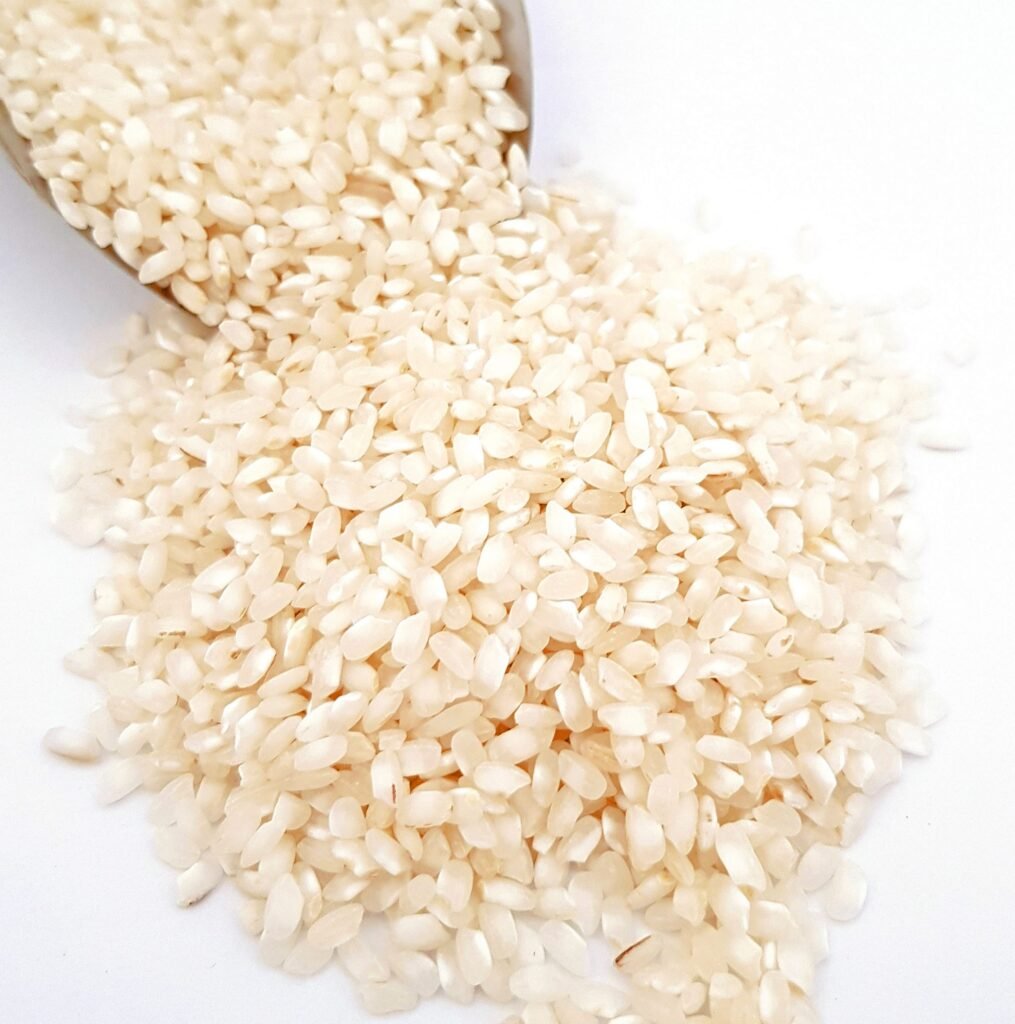
Senia variety rice is creamy, moist inside and on its surface, which favors the conduction of flavors. But the same surface moisture that provides added flavor prevents the beans from loosening up. Hence, it does not support overcooking and is easily knitted.
However, the Bomba rice variety is more appreciated than the Senia variety. The advantage of Bomba rice is that it retains very similar organoleptic characteristics to Senia but is more resistant to overcooking.
Bomba rice allows us to exceed the optimal cooking time for a few minutes without the rice overcooking or “filling”. As it is richer in amylose than Senia, it holds overcooking and stands better without overcooking it, although its texture is less creamy and transmits flavors a little worse than Senia.
It is especially appreciated by restaurants since they have to cook many rice dishes at the same time and as well by those who want to make sure that the rice will come out more easily at its point. For some years now, a variety known as Albufera has been cultivated, whose amylose content is higher than Senia rice, but lower than Bomba.
As we have seen, the Bomba variety has an added value that has made it one of the most appreciated rice dishes both by great restaurateurs and by housewives. This rice keeps the grain loose and hard even by overcooking it, meaning that the rice won’t pass or dough even if we let it rest too long.
In this way, the task of cooking and serving the rice is easier. And that is the reason our Paellita’s come only with the best Bomba rice!
The Importance of the Paella Pan
How the Name “Paella” Originated
As we have seen in previous posts, Paella gets its name from the Valencian term for frying pan, that comes from the original Latin word for pan, “patella”. Originally known as “Valencian rice”, it was due to the popularization of the dish in its iconic pan that we now get to know our most famous dish as Paella.
Let’s now take a journey to understand what is a Paella pan, why it is important and how to pick the right one for our needs. And as always, since it’s about the Easy Paella, we will take a fun, easy journey in very simple steps.
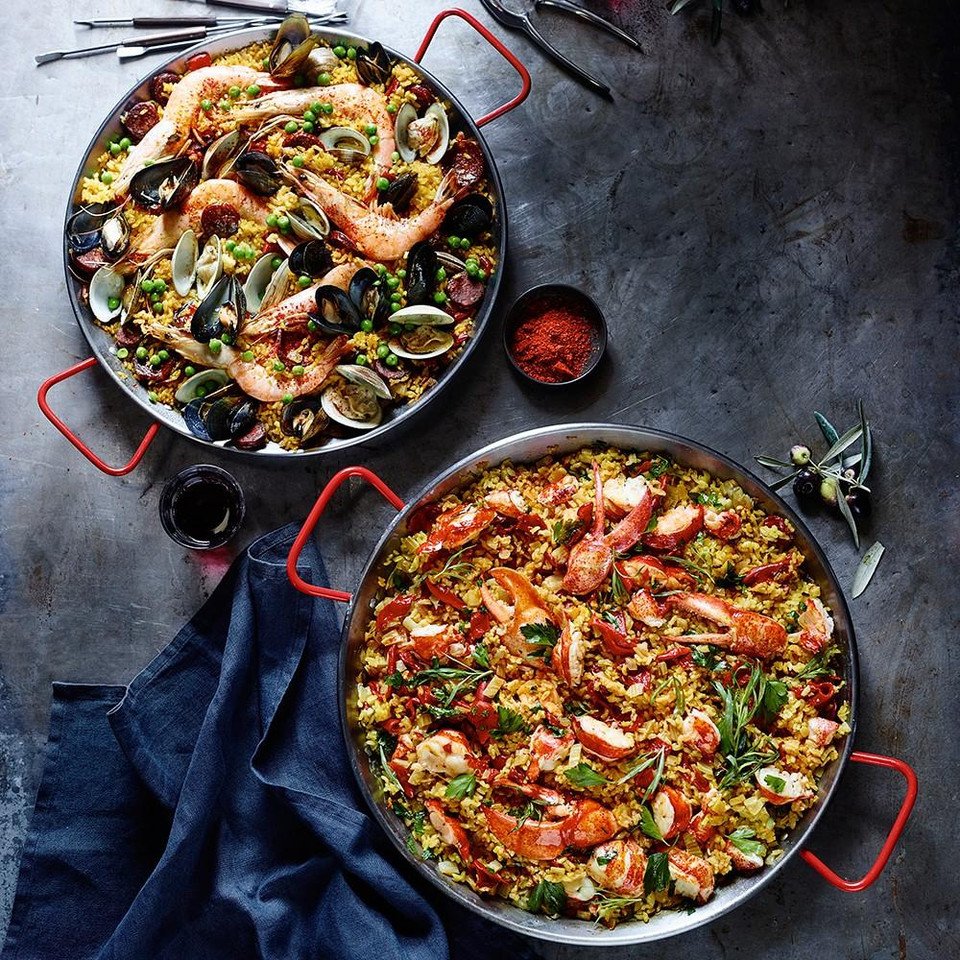
Why the Importance of the Paella Pan
According to the Paella experts, they maintain that the success of making a Paella relies on two factors: the quality of the ingredients (specially the rice), and the container. And this is, plain and simply, very true.
Because while the quality of the ingredients used in making a Paella is critical for obvious reasons, the truth is that the way in which the heat is distributed through the Paella pan is what makes it different from other elaborations of the many other world dishes based on rice.
And how is that? Because due to its peculiar shape the Paella pan is the only one that manages to give the rice the right distribution and equilibrium to achieve its distinctive touch and taste.
The Easy Paella Pan Guide
So now that we have gotten to know the origins and importance of the Paella pan, let’s dive into a complete guide on how to pick the right pan!
What is a Paella Pan?
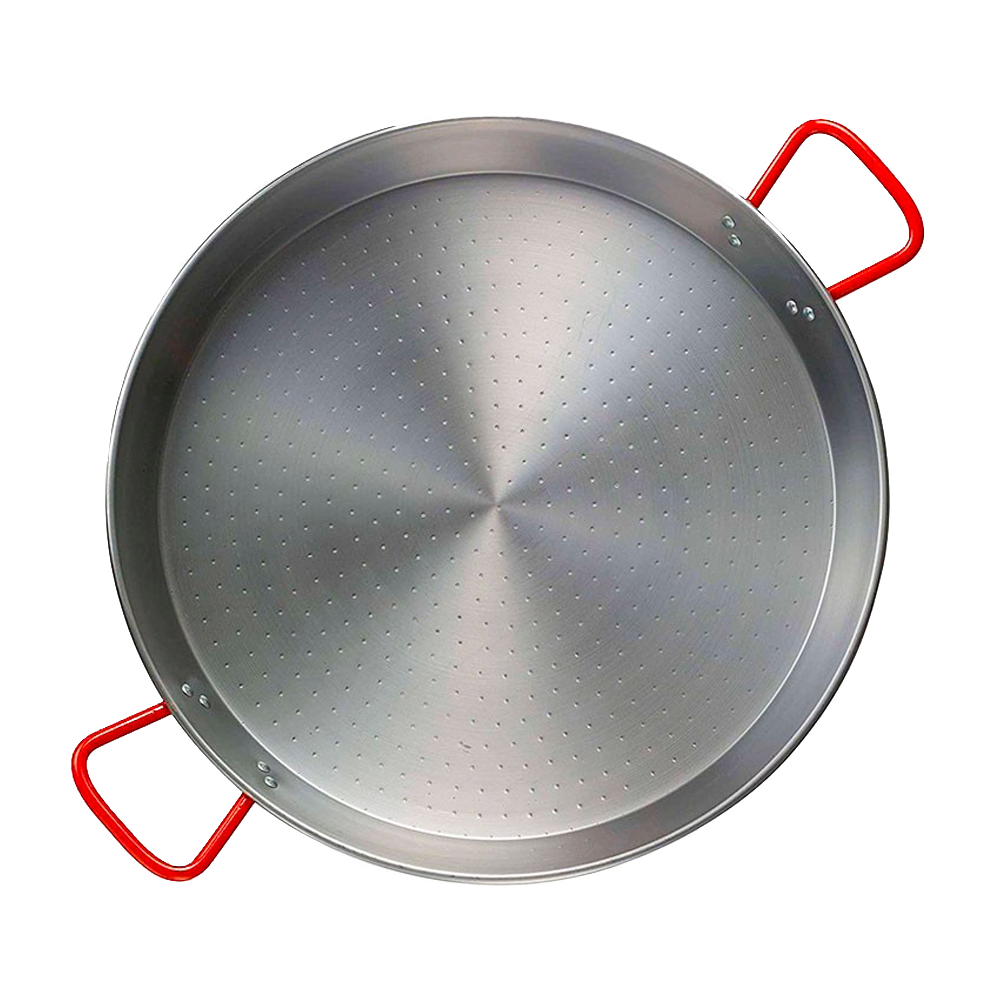
In essence a Paella pan is nothing else than a container used for cooking. However, with a very specific use: to cook Paellas. Hence, the name of the dish is the same as the name of the technology in which it is prepared.
Usually made of metal, mainly stainless steel since it is more affordable by the general population, we can also find paella pans made of iron, which are actually the most prized ones since they are the more traditional, though their weight is bigger but at the same time they manage to distribute the heat better.
A paella pan is a kind of pan without a handle, rather it’s characterised by being a large circular pan with two side handles. Depending on different diameters it will allow you to prepare the number of servings you need. And in most cases, it will have a non-stick coating on the inside and sometimes the outside as well.
Mostly, it is an essential utensil to prepare a traditional paella.
The main characteristic of a Paella pan, and the main reason why it is the used utensil to cook Paella, is that it is shallow and very wide, allowing the ingredients to be cooked by adjusting and equilibrating the appropriate evaporation times.
Therefore, when purchasing a Paella pan, we must pay attention to these elements: the material with which it has been made of, the size and the depth of it. The latter should not exceed 5 or 6 centimeters. That is, it must be large in diameter but shallow.
How to Use a Paella Pan for the First Time?
If you want your paella pan to last a long time, you must take care of it from the beginning. One of the best ways to do that is to prepare it for the very first use.
Experts recommend that before doing so, boil the paella pan with water and vinegar for a few minutes. Then empty it, let it cool a bit and clean it with soap and water. This very simple yet effective trick will prevent the paella pan from rusting in the future.
Thanks to its iconic handles, it allows us to properly place the pan on the heat source and remove it comfortably once we have finished preparing it. But be prudent because as we know, metal is a conductor of heat, so we must be careful not to burn ourselves since the handles are usually made of the same material as the rest of the Paella pan.
What is the Right Paella Pan Size?
When it comes to the right diameter of a Paella pan, it essentially comes down to knowing the number of people who are going to be delighting themselves with our Paella. And one of the most important questions when buying your Paella pan is to calculate the portions well.
It is important to proceed in this manner so as not to fall short and not to buy a too large paella pan. Although each manufacturer has their particular measurements, we have prepared the following table so that you can calculate the one you will need.
| Servings | Diameter |
| 2 | 26 cm / 10.2 inches |
| 3 | 28 cm / 11.02 inches |
| 4 | 30 cm / 11.8 inches |
| 6 | 34 cm / 13.4 inches |
| 8 | 38 cm / 15 inches |
| 10 | 42 cm / 16.5 inches |
| 12 | 46 cm / 18.1 inches |
| 16 | 55 cm / 21.6 inches |
| 20 | 60 cm / 23.6 inches |
| 25 | 65 cm / 25.6 inches |
| 30 | 70 cm / 27.5 inches |
What Materials Should a Paella Pan Be Made of?
Another aspect that you should take into account when buying your paella pan is the material from which it is made of. This is an important issue because it will determine the use that you can give it and also how long it can last.
Do not leave this matter to chance, as it will be key to get the most out of it. So, pay close attention to this table.
| Material | Characteristics |
| Polished Steel | It is the type of Paella pan in which traditional Valencian paella is usually prepared. They are very resistant and can be used even with firewood, fire and gas. |
| Stainless Steel | Stronger than polished steel, it is a material from which you will get great performance for its durability. They are also suitable for firewood, fire and gas. |
| Aluminum | Since Paellas are not suitable for induction, if you have this type of stove you will have to acquire one that is, such as the aluminum one. |
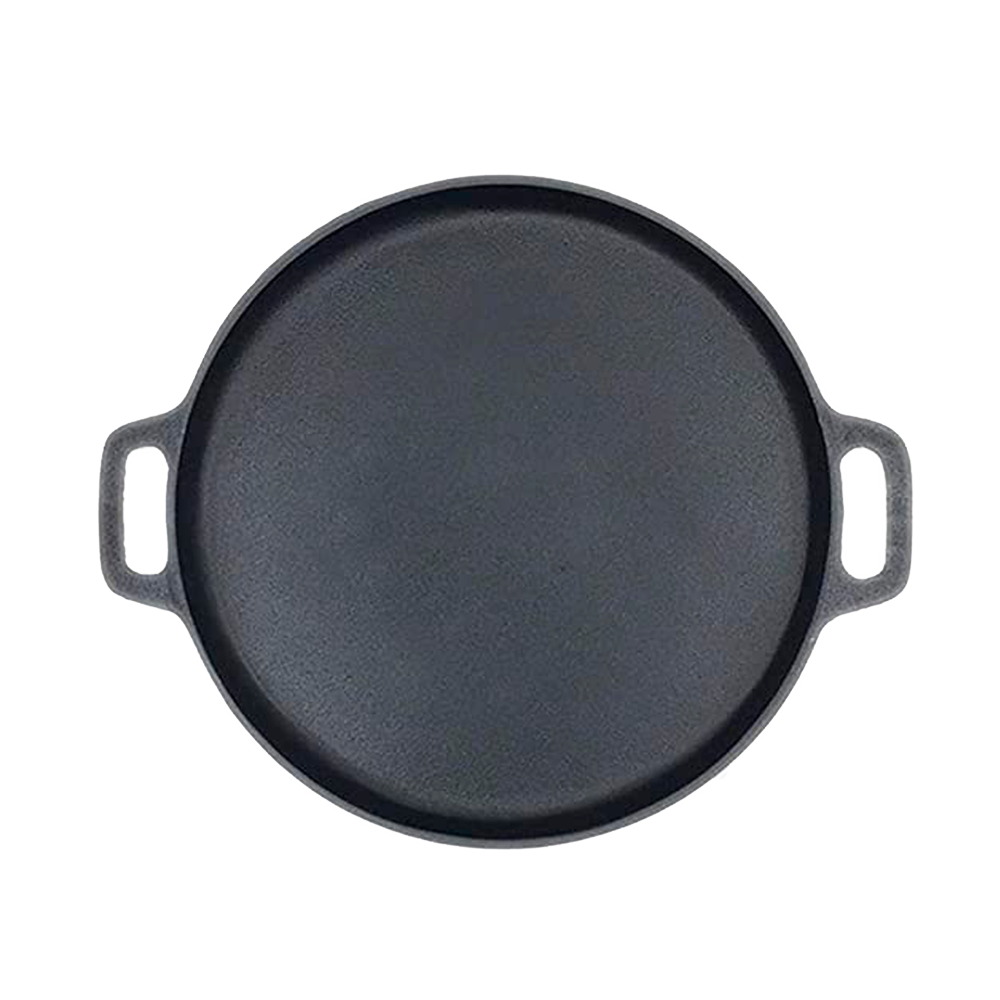
How to Use a Paella Pan?
The use of a Paella pan is actually very simple, but you must take into account a series of aspects to make sure you do it the right way.
As instituted in the previous information, you need to know from the first moment how you should use it. For that reason do not overlook what you will see in the following list, so you can prepare the most delicious Paella to delight your guests.
– Initial cleaning. Tradition says that before using a Paella pan, it is important to clean it with vinegar and gravel. Why? So we can ensure that our Paella won’t have a metallic taste.
– Stoves. Regarding the stoves you have in your kitchen, you should always use the largest one. If they are not too big, try that the chosen model of Paella pan has a surface that distributes the heat evenly. If you are to use it outdoors, check that the base on which you will place it is stable and thus it will not lose its balance.
– Temperature. When using your Paella pan, always use the right temperature. Excessive heat could damage your materials. Of course, be careful and do not place afterwards the empty Paella pan on the stove to prevent it from burning.
– Careful treatment. It is important that when using the Paella pan you try to be as careful as possible. If you do, obviously it will last you longer. If you can try to use wooden utensils while you are cooking, it will avoid scratching the internal surface of the paella pan. Be aware that scratching the interior will damage the non-stick coating.
– Cleaning. Again we want to emphasize the importance of doing it as soon as possible, at the beginning but afterwards as well. Always leave it to soak until you clean it.
– Cured. Some producers recommend smearing the inside of the Paella pan with oil to prevent it from rusting. This process is called “Curing”.
– Storage. When you are not using it, always store the Paella pan in a dry place without humidity so it will last you longer.
How to Clean a Paella Pan?
It is important to remark that the Paella pan has a non-stick coating, essential when it comes to prevent the food from sticking. So it is relevant to clean it the right way to prevent that coating from being erased.
The best way for that is to clean it as soon as it cools down, or when you finish enjoying the Paella. If you choose this second option, we recommend that you leave it to soak with soap and water, so the dirt will not be embedded in the pan.
The first thing you should do is remove any remaining food. To prevent scratches, use a wooden spoon and you can use vinegar and spread with kitchen paper to remove the leftovers that may have remained. Then, clean it with soap and water until it looks shiny. Keep in mind that some models can be put in the dishwasher, it will be easier.
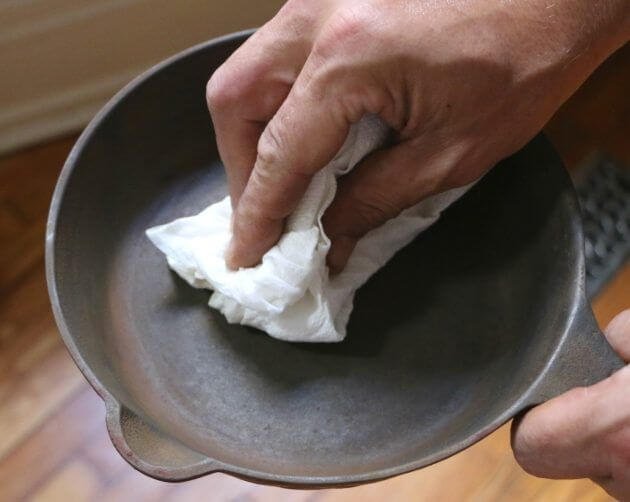
After we have used it and cleaned it, tradition tells us that the best thing to do is to keep it with a little fine salt or a little flour dusted so it will absorb moisture and maintain itself properly. However, don’t be deceived by this, since only the more purist Paella chefs follow this advice.
How Important is the Paella Pan
When it comes to buying the classical and most loyal ally for any Paella, it is essential that you understand some of the most important features of the available options, in order to know if we actually need a Paella pan that best suits our wishes and requirements.
Because making the right choice of a good pan can be the best decision for your Paella experience!
Advantages and Disadvantages of Paella Pans
At this point in the buying guide you already know quite a few interesting aspects of Paella pans. But you still have to assess some other issues to make your purchase successfully.
Before the final analysis, we want you to be clear about the main advantages and disadvantages of paella pans. Take them into account when you go to make your purchase.
| Advantage | Disadvantages |
| It is the best way to prepare a Paella | Not all of them are suitable for all stoves |
| They are quite cheap | Some are not easy to clean |
| There are many different options | The largest ones are difficult to store |
Important Purchase Criteria when Buying a Paella Pan
So far you have discovered many aspects that you must take into account when making your purchase.
Let’s take a final look at some important issues to analyze and assess before getting the best Paella pan. We have prepared a list with the purchase criteria that you cannot ignore.
- Stoves
One of the aspects that you should assess is whether the paella pan is valid for the type of stove in your kitchen. It will be of vital importance if you have a ceramic hob and especially with induction.
For the latter case, not all models are suitable. If you are going to use it outdoors, check if it is suitable for barbecue or firewood. Finally, keep in mind if it is suitable for the oven.
- Size
You should check that the size of the Paella pan will allow you to cook for your family or guests. As it is a relatively affordable kitchenware, perhaps you can have two Paella pans. One, for the times you cook just for your family, and a larger one for when you have guests.
- Materials
As we have seen Paella pans are made of different materials, being the most common steel and aluminum. Remember that there are two types of steel, polished and stainless, being the first one the most used one for Valencian Paellas.
If your choice is stainless steel know that it is even more resistant. However if you have an induction cooker, aluminum is probably the most suitable option.
- Non-stick coating
Most Paella pans have a non-stick coating on the inside to prevent food from sticking to the surface. But you need to check that yours also has it. Some models come with this type of coating on the outside as well. Remember that it is very useful for cleaning and taking care of the Paella pan.
- Security
Safety in the kitchen is vital, let’s not forget that a large number of domestic accidents occur in it. Make sure that it complies with all the existing regulations on this aspect. Some models have removable silicone handles to avoid burning yourself, a very useful option.
And of course, always use the Paella pan safely and with extreme precautions.
The last things to take into account:
- Compatibility with your type of kitchen: it will vary if it is glass-ceramic, induction, fire, gas or electric.
- Size: It’s about the right diameter and depth. Since it may not work for the amount of food you want to prepare in the pan, but also you may have trouble finding a good space to integrate it into the kitchen.
- The Coating Materials: Take into account the type of kitchen where you want to use, depending if you are going to use a traditional Paella pan or an electric frying pan.
- The Function of the Frying Pan: Take in consideration that not all electric frying pans include an adjustable thermostat. While some will allow you to adjust the temperature to your liking, others may have only the basic “on / off” options.
- Pan Simplicity: You may want to keep things simple and pure, but some of you may want to rely on the possibilities of new technology.
- The Design: The importance of the pan including a lid. Because although it may seem as irrelevant, for lovers and true chefs it may be very important to choose a pan with a new design with or without a lid, especially if you are going electric.
- Other Uses: If you may be using the Pan for other dishes such as cooking pizzas that come ready from the supermarket to put in the oven, then you may choose a pan that does not include a lid. If, on the other hand, your plan is to make Paellas, it would be ideal to buy a pan with a lid.
- The price. And obviously the eternal factor. A good quality / price ratio is essential when choosing the right pan.
Do We Actually Need a Paella Pan?
So after all, the question still remains the same… Do we actually need a Paella pan?
The reality is that no, you don’t necessarily need a Paella pan to cook one. Obviously, if you want a true authentic experience then the Paella pan is a must, and since we are sure that you will love it, you will use it more than once, specially for big gatherings.
At the same time, Paellita is the Easy Paella, so it was created to have the best quality Paella without needing to be an expert chef or needing, as you may have guessed, the whole Paella equipment.
Leaving tradition aside, although Paella has been cooked over fire, or gas in the last years, currently there are models that allow us to cook on all types of glass-ceramic cookers, which combined with Paellita, The Easy Paella, will serve you as good as any traditional pan.
However, due to its low price and for the sake and beauty of a true Paella experience, we do recommend the purchase of a Paella pan depending on the quantity of guest you are going to attend to have a more intimate and real experience of a true Paella.
Just think of those Instagram pictures for full, beautiful, Paella memories!
Which Paella Equipment is Best
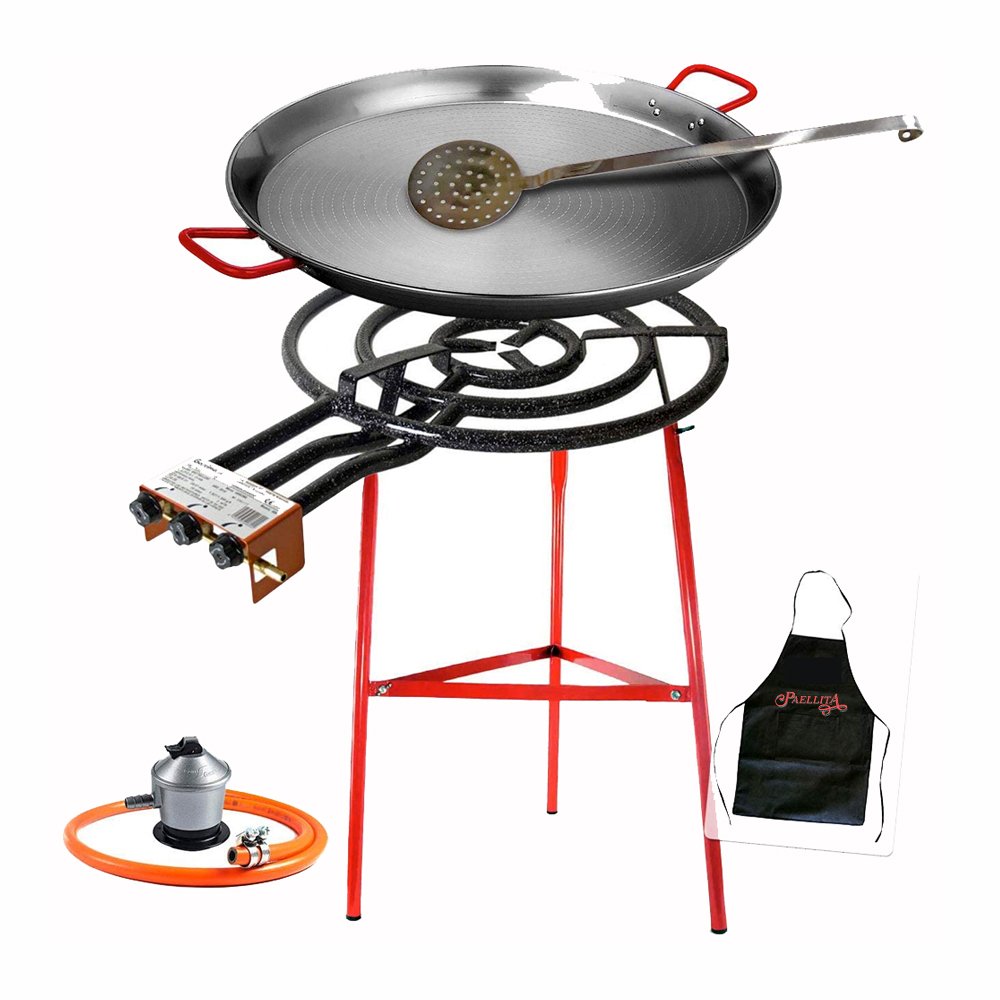
So when preparing an authentic Paella with the right pan, then properly setting up a Paella burner is a very important part of the Paella tradition and experience.
Even though it may look as a complicated issue, the good news is that it is actually a very simple task, but at the same time, it is extremely important to take the necessary precautions so we can enjoy an afternoon outdoors free of any kind of danger either to our physical integrity or to the safety of the environment.
Let’s find out what are the classical materials needed to cook a Paella, plus we’ll learn the whole process of how to install the Paella equipment step by step, so there won’t be any detail left out all the while eliminating all possible risks.
Not only Paellita is the Easy Paella, but as you know we want to help you create the best and yet easiest Paella experience for your friends and family.
What is the Classical Paella Equipment
In essence, Paella burners (from now on we’ll refer to them as “Paelleros”) are stoves with one or more concentric circles used to cook in a homogeneous way, so the rice receives the same amount of heat while being cooked.
Therefore allowing our Paella to be well balanced and fully tasty, by the process of lighting a flame after the combustion of the gas running inside, generally butane gas.
Though “Paelleros” come in various presentations, they are mainly classified according to the number of independent rings they have to distribute the flame. The greater the number of rings that the paella pan has, the greater the diameter of the Paella pan.
- A Paella pan with 1 ring is ideal for small diameter utensils.
- A Paella pan with 2 rings will distribute the flame independently through 1 or 2 rings, so it can be used with utensils of intermediate diameter.
- Paella pans with 4 rings are ideal for paella pans or utensils of all diameter, but they are basically used for large Paellas, since for obvious reasons they are the ideal equipment to distribute the flame over one or more rings.
How to Install the Perfect Paella Equipment
Let’s now review the process of installing a full Paella equipment, step by step and easy as it gets!
Keep in mind that as “Paelleros” are gas-fired products, the proper installation of a Pan becomes a matter of uttermost importance so that it won’t create any future inconvenience that will turn a wonderful day outdoors into a rough memory.
As we mentioned before, “Paelleros” are essentially stoves activated due to the combustion of gas such as butane. Since using them has some risks, it is very important to know that all instruments must be correctly installed when preparing the burner.
The Right Equipment
These are the elements for the correct set-up of a Paella pan:
- Gas Cylinder – Generally butane gas bottles, usually the type of gas that is used most of the time for the use of “Paelleros”.
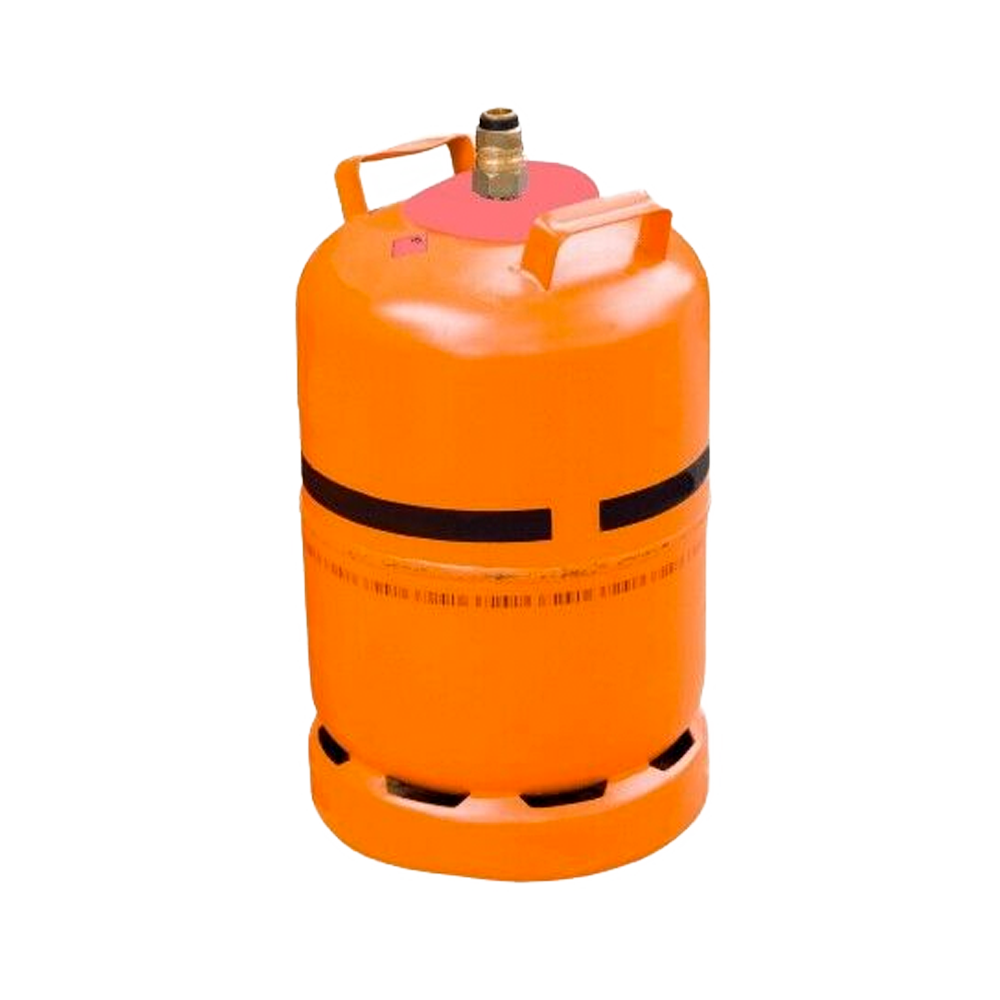
- Gas Regulator – Must be connected to the outlet of the gas bottle or cylinder and with the rubber that leads to the Paella pan. It should be taken into account that for Paella cookers up to about 50 cm in diameter, a regulator of 30 millibars is enough and for Paella cookers with a diameter greater than 50 cm in diameter, regulators of 50 millibars are suitable.

- The Rubber – Responsible for carrying the gas from the cylinder to the “Paellero”. It is very important that we verify that it is in good condition and it must also be kept in mind that these flexible tubes have an expiration date, after which it is not guaranteed that it may present gas leaks or simply deteriorate during use and consequently, compromise the integrity of the installation of the Paella pan and the gas cylinder.

- Paella Burner – Suitable for the quantity of food to be prepared.
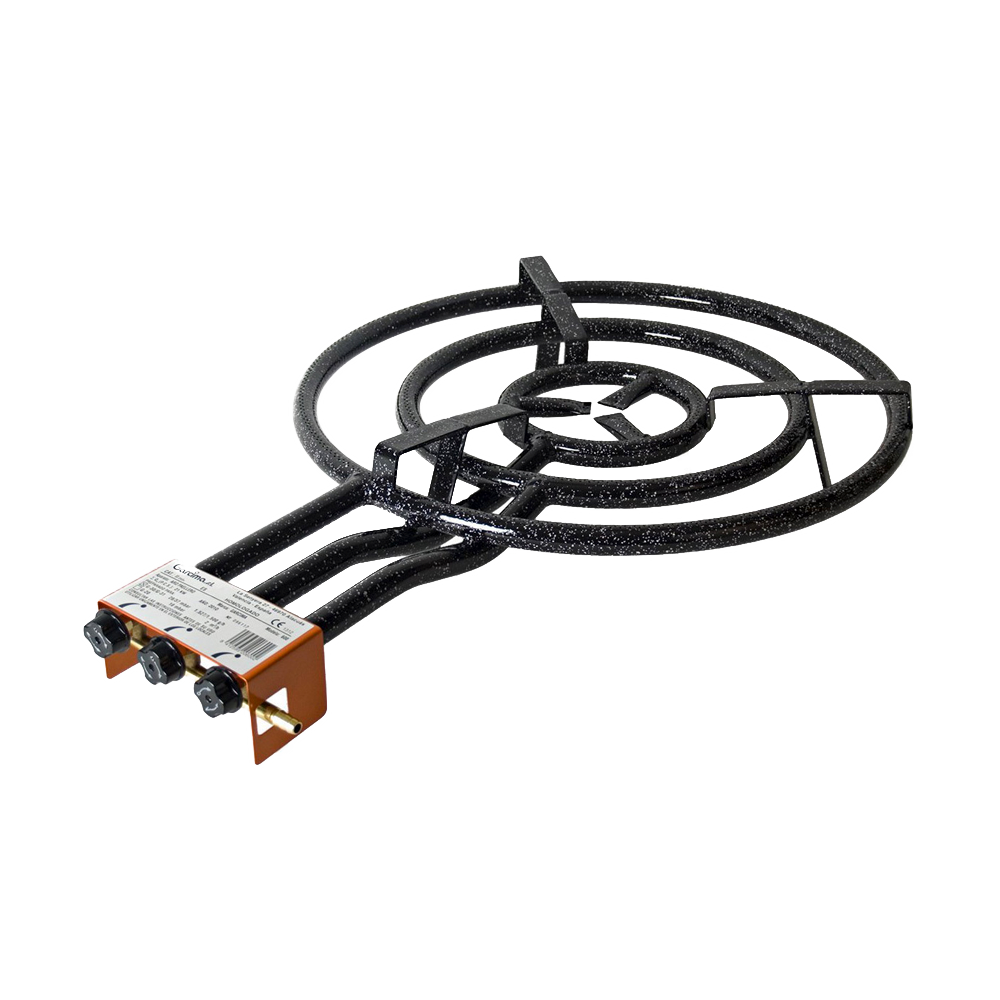
- Support – Necessary so we can install at a suitable height the Paella for safe use and handling. We need to be comfortable after all!
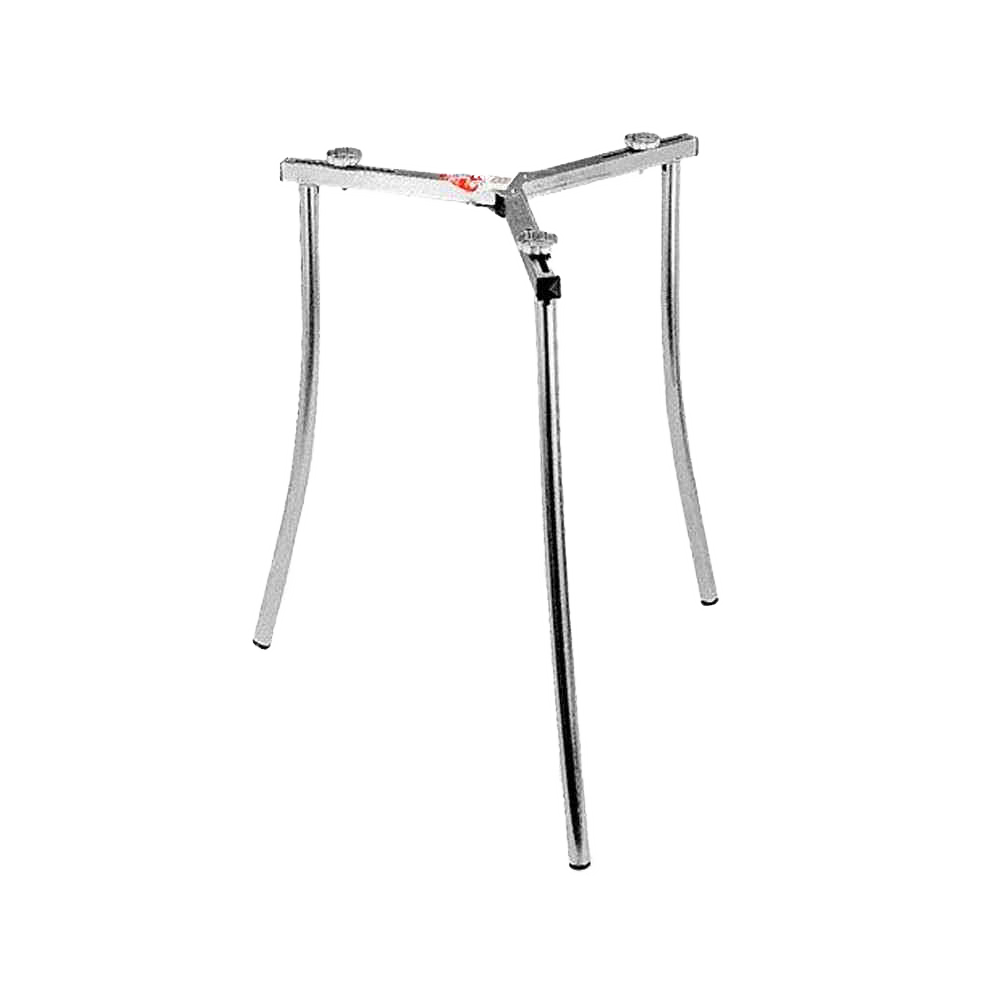
The Steps for the Installation of the Paella Equipment
Now that we have learned all the elements that are part of the Paella equipment, let’s take a look into the few simple steps to carry out the proper set-up of the “Paellero” to enjoy a proper Paella:
- The first step is to have the cylinder stopcock closed and the gas regulator separate from it. For pure safety reasons, It is fundamental that we do not initiate the installation with the gas cylinder connected to the regulator, let alone with the stopcock open.
- Connect one end of the flexible tube to the “Paellero”. Hence the rubber must be pressed with the burner inlet. After that we have to connect the clamp crimped to the tube and it must be connected and fixed with the help of a screwdriver.
- Now it’s time for the Gas regulator. It is a very important piece in the preparation of the Paella experience. Regulators can be 30 millibars for small diameter Paella pans, as well as 50 millibars for larger diameter paella pans.
- The other end of the rubber must be taken and installed to the gas regulator once the flexible tube is connected to the Paella pan, pressing it with the gas regulator outlet that is on one side of it. Once connected, it must be secured by inserting a clamp in the same way as was done with the opposite end.
- And lastly, the rubber should never bend or twist. It is important as a safety measure that we remember this step while the Paellero is being installed. With this in mind, the only thing left is to install the gas regulator to the bottle and open the stopcock so we can use the Paella pan with complete confidence.
As you see it has been very easy right? If we have followed these steps while setting up the burners to the letter, it is now the time to finally use the Paellero so we can start the whole Paellita experience fully safe.
Always remember to take into account the safety tips before installing the elements to be safe to fully enjoy the moment of cooking Spain’s most famous dish.
The Classical Paella Accesories
So far we have covered the basics, mainly the Paella’s history, its ingredients, the rice and obviously the basic equipment to deliver a true authentic Paella, the Paella Pan and the whole Paella set.
Then the question is, is there anything left to learn in order to deliver a full authentic Paella Experience?
Since the devil is in the details, there are a couple of key elements left that will make the difference for your Paella to be as if it had been cooked by the best Valencian Chef!
The Wooden Spoon
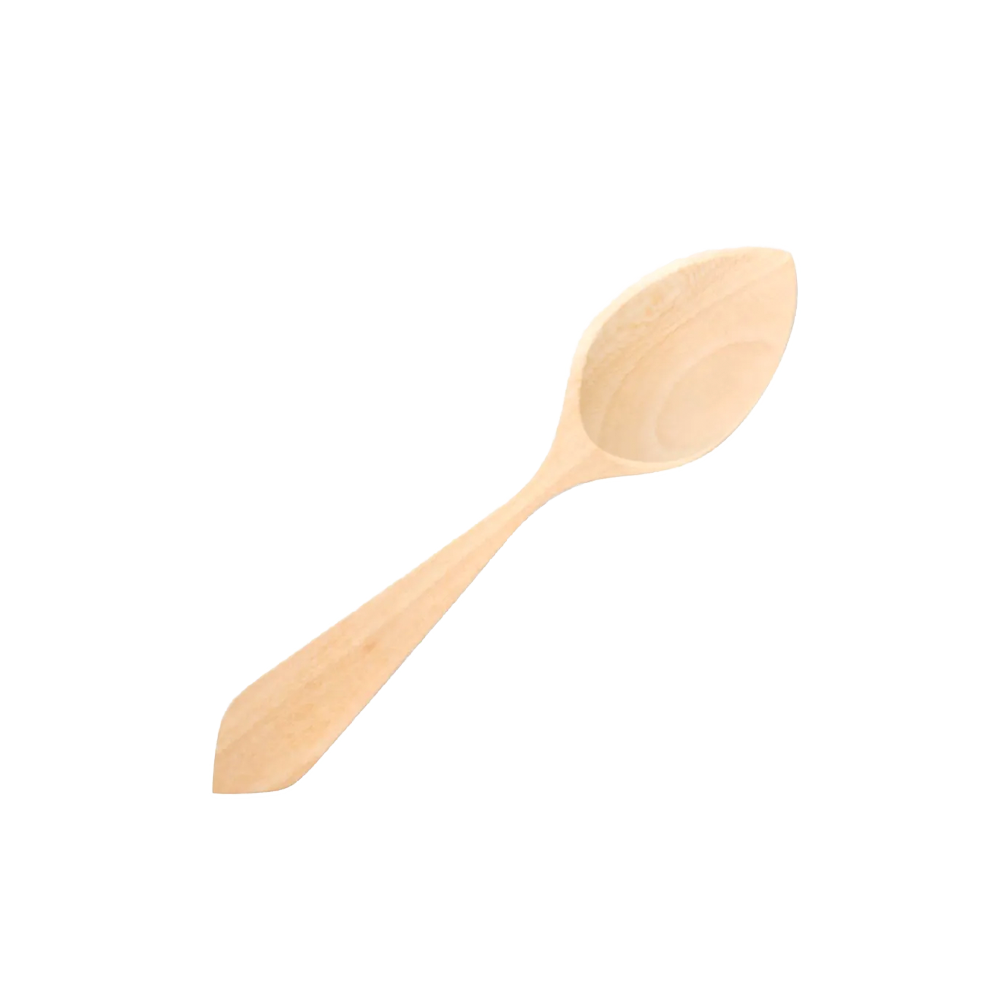
The wooden spoon is, with the Paella Pan, the other important symbol of the Paella experience, since it represents the ideals of sharing that our most iconic dish symbolizes. So what is the story behind the importance of the wooden spoon?
The wooden spoon, also known as “Cullereta” in Valencia, is a symbol of identity and history and a fundamental part of this dish that we love, the paella.
As a matter of fact, they are so important that the wooden spoon were created by the “Culleraires”, official developers of the “Culleretas” with the signature distinction of the famous spoons made commonly of a material known as the ivory of the woods, the wood of “Boj”, an native tree of the Mediterranean landscape.
The art in the carving of the famous boj wood spoons or “Culleretas” for Paella is a trademark for the history of the Valencian region. This craft has been carried out since the 19th century in a completely artisanal, totally hand crafted way, without molds or chemical treatments.

This adds great value and personality to a product for those who love cooking in general, but particularly for Paella lovers. That is the main reason behind the Boj spoons making it to this day, since they are made with great care, of high quality and created with great care for Paella connoisseurs.
To this day Boj is recognized by true Paella lovers as the ideal wood to make kitchen utensils due to its hygienic properties, its lack of pore and its toughness. It is a hard, yellowish and heavy wood, used for ease and perfection in delicate carvings.
What’s even greater is the fact that products made with boj wood do not deteriorate or absorb dirt or odors, nor do they turn black over time which is essential when it comes to the art of Paella cooking.
Curiosities and traditions of the wooden spoon when eating paella:
The boj wood spoon or “Cullereta”used to be a non-transferable object, strictly owned by one individual so when it was time to enjoy a paella, each person had their own signature spoon.
Take in mind that originally Paella was enjoyed as a collective dish where every participant would eat directly from the pan, a tradition that is somehow lost except for the most traditional Paella lovers.
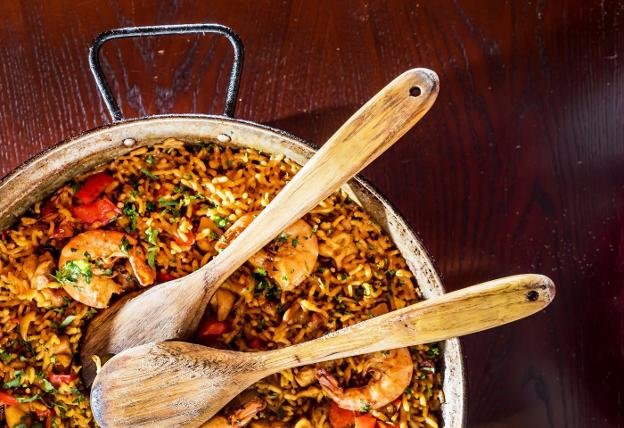
Nowadays it is a rare exception, but you can still eat the Paella with your wooden spoon to keep it as authentic as possible. The ideal boj wood spoon to eat paella is not deep, and actually it is recommended that it be as flat as possible.
Due to the nature of boj wood, it is a smooth and free of imperfections spoon when compared to other spoons that are made of other materials, which depending on the nature of the wood as well on the quality and treatment given to the wood, it can lead to a rougher experience, which can ultimately ruin what it is supposed to be a great Paella experience.
And if you were to follow the tradition and eat a Paella collectively, it is necessary to choose your position at the table and start eating from the shore to the center, always seeking to respect the portion of the other commensals.
The Skimmer
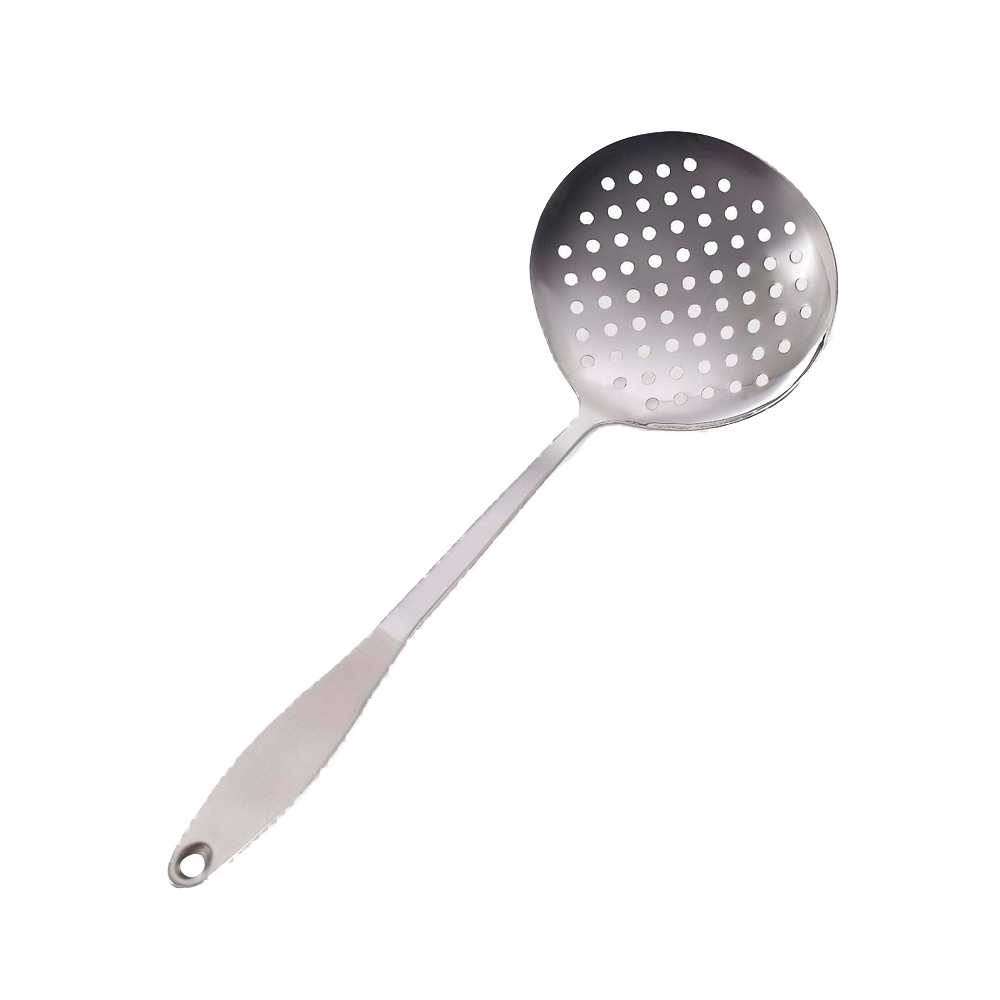
Popsicles and skimmers or skimmers are essential utensils when cooking Paella. Their purpose being very simple: they help us remove fried food from the inside of the pan or paella pan.
And remember, ultimately that fried dried rice is the most desired price in a Paella, the famous “Socarrat” (you can find more about it here).
It’s name comes from the very simple notion of its nature, to remove the foam from broths or liquids. And essentially consists of a long handle and a kind of paddle-shaped bowl so we can operate easily without getting burned, and very open and with holes on its surface so that when removing solid food, the liquids drain through the holes.
The Apron
And of course, the ultimate accessory to feel like a real, authentic chef from Valencia: the apron.
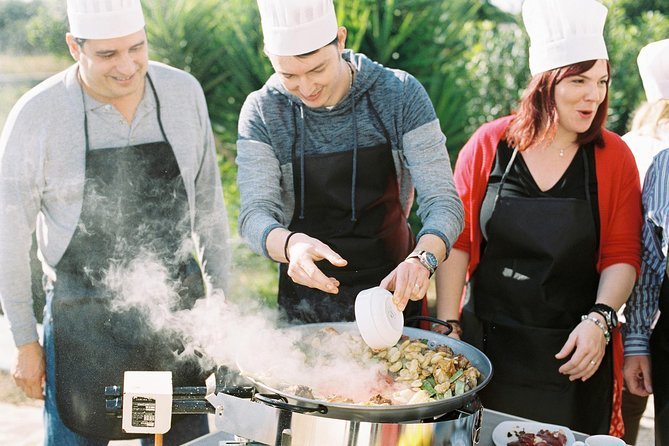
Because the apron is not just a tool to protect yourself or your clothes from getting exposed to possible inconveniences when cooking the Paella. The apron is a true symbol of the experience, know how and quality of the chef. The right apron is for the Chef like the right watch on a business meeting, it is the ultimate accessory that will define the expert from the beginner.
Because you wouldn’t trust a tattoo artist with no tattos, would you trust a Paella chef without an apron?
The Classic Paella Accompaniments
There is not a good Paella experience without the right accompaniments and the classical dishes that usually go along with our beloved rice.
Some dishes or ingredients are considered as essential as the Paella itself when it comes to eating the rice, and even though not everybody will actually use them, they will certainly feel them missing if they aren’t on the table for others to enjoy. The right accompaniments are an absolute basic when it comes to enjoying the best possible Paella time.
What are the Classic Paella Accompaniments?
While just Paella is enough already as a meal, since Paella is a dish used for the celebration of life and a sense of sharing a great time with our friends and family, in Spain we like to start the experience with some dishes that will create a longer, deeper and of course, richer experience. Take note of the next accompaniments if you want to recreate the true Spanish Paella tradition!
Mediterranean Salad
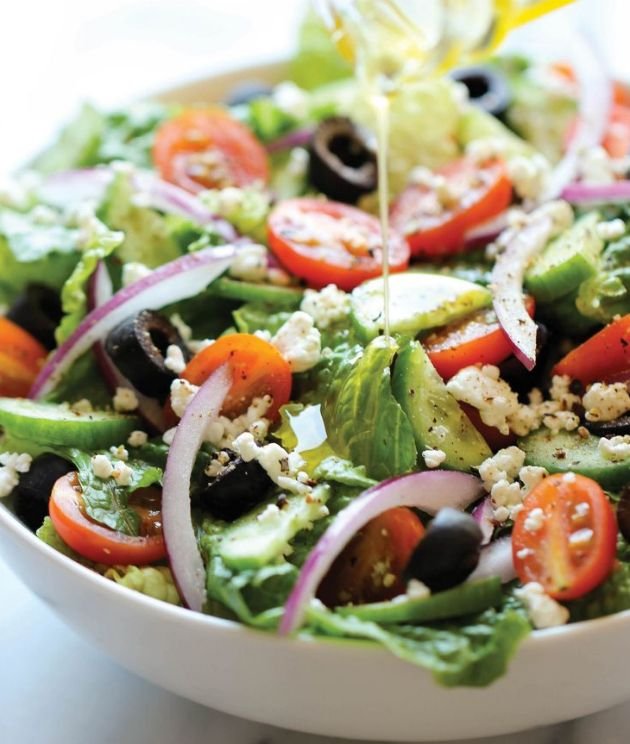
Another classic of our gastronomy, yet an absolute essential when it comes to enjoying the best Paella, is a mediterranean-based ingredient salad, with the mixture of romaine lettuce, tomato, potato, onion, olives, salt and olive oil as the base. It’s freshness will prepare our digestive system for what’s to come!
Alioli Sauce
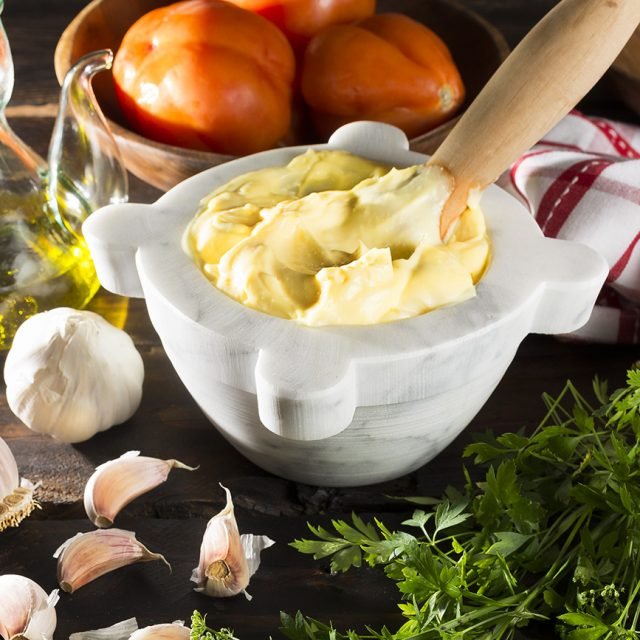
A very Valencian sauce made of garlic and olive oil is a classic for some when it comes to adorning the Paella. While not everyone will enjoy its taste, it is still an absolute must to be on the table for those who do desire to use it. However, keep in mind that due to its strong taste if you put too much quantity it will overcome the taste of the Paella.
Lemon
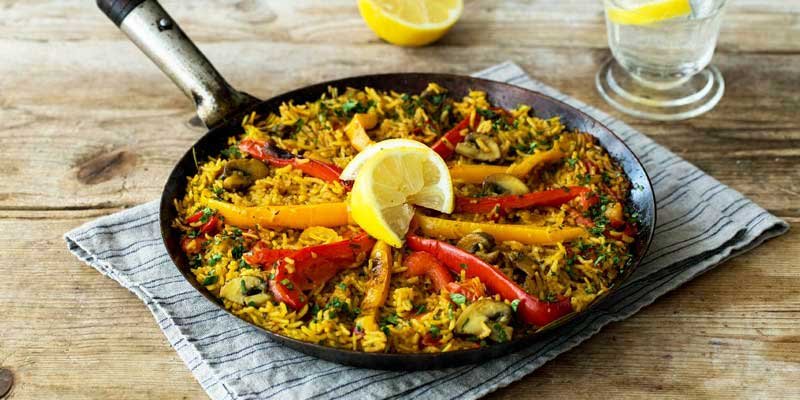
As with AliOli, using lemon to dress the Paella is an act that not everybody will do, but yet it is considered essential to have some lemons prepared for those who want to add a critic and more fresh taste to the Paella. But, as with AliOli, beware of the quantity if you don’t want to invade the true taste of the rice.
Jamón
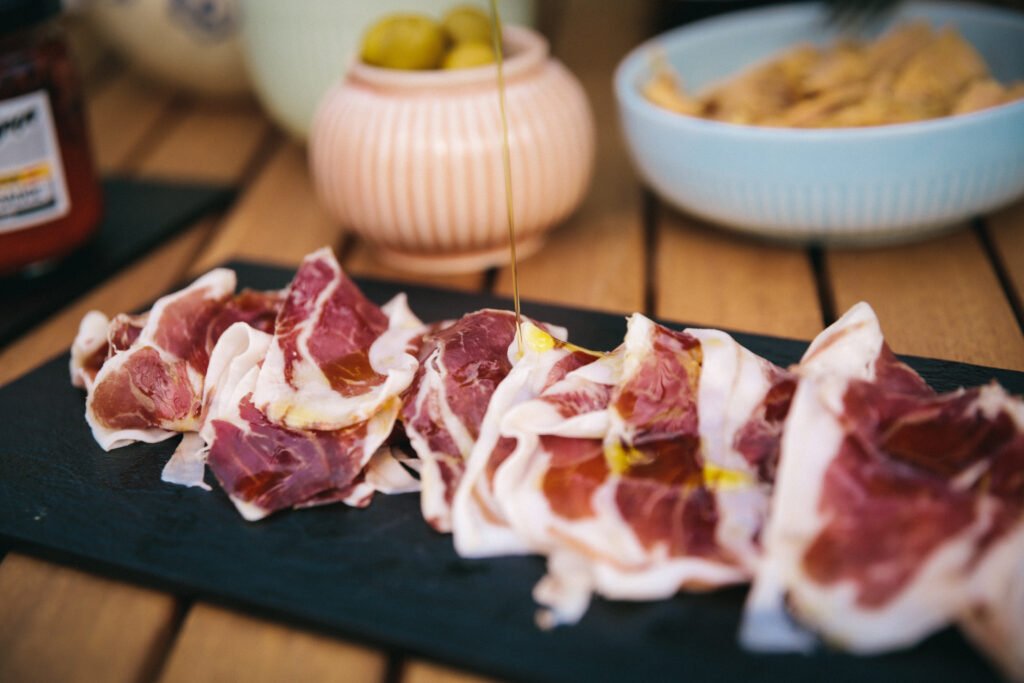
Of course, our most famous dish could not be completed with the king of the crown of our gastronomy, our as well iconic and famous Jamón. A true delicatessen that when served as a starter can only make the experience even more celestial. Because it is only right to enjoy a Paella with a plate of Jamón.
Wine
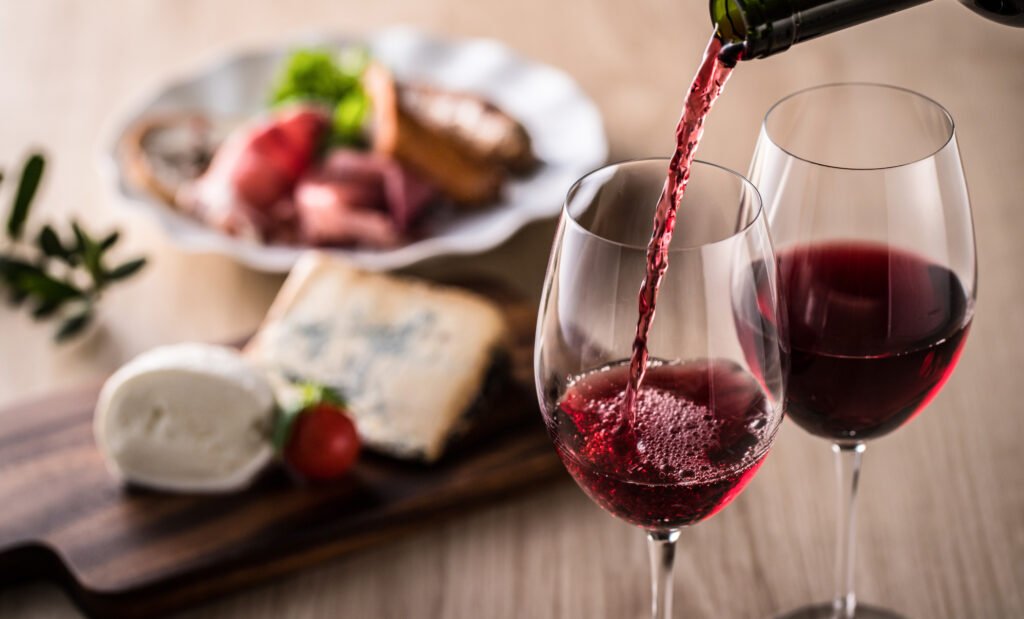
What is there to say about the most ancient drink that has been an essential part of the mediterranean culture and way of life since the early centuries? The right kind of wine, whether it is a cold white wine or a more traditional red wine, is critical when gathering together around a Paella si it will bring the best of the conversation and a relaxed manner that will make us enjoy even more the moment with our beloved ones.
Sangría
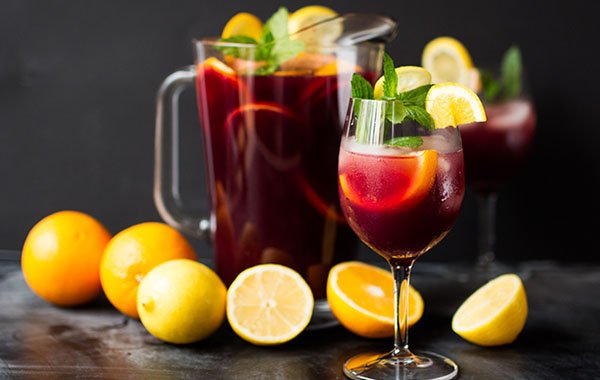
Obviously, if there is a drink that is ideal for a Paella experience, and that doesn’t get any more Spanish, is the Sangria. The cold, wine based drink is the perfect accompaniment for our most famous dish, especially in those hot summer days. Remember the ingredients to create one: let macerate for about two hours wine, lemon and orange, other fruits, spices like cinnamon, and some Vermut if you feel like it, to have the most refreshing drink!
Gazpacho
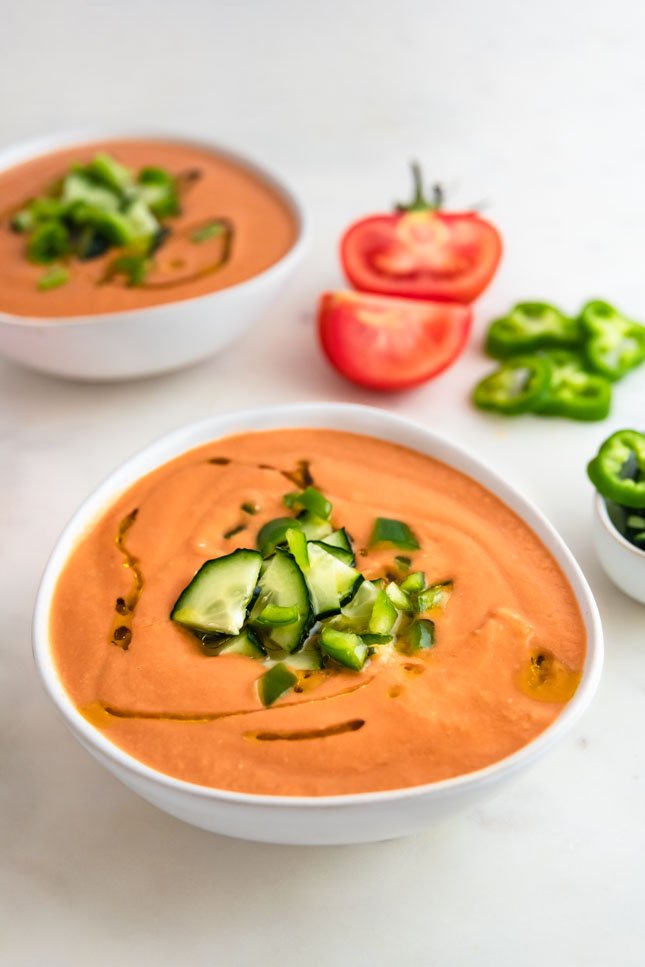
Another mythical Spanish drink, ideal for a Paella experience as well most suited for the summer, is our beloved gazpacho. A popular drink that started with to help peasants with their hard working days, Gazpacho is a drink of several ingredients such as olive oil, vinegar, water, raw vegetables, usually tomatoes, cucumbers, peppers, onions and garlic.
Lemon Sorbet
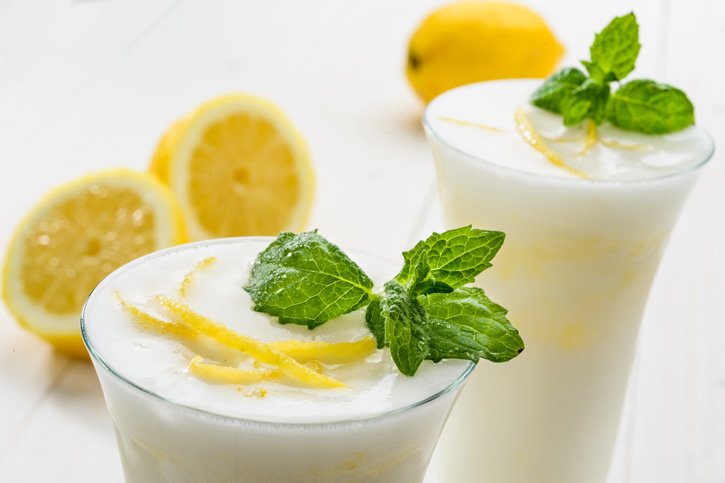
Because after many dishes, and a lot of quantity, one may end up very full but still in need of a refreshing finish, a great option is then a fine lemon sorbet. In this way, you will finish the meal with a refreshing flavor that will help you digest the Paella. Based on lemons, add sugar, egg white and water and you will have all the ingredients to make this dessert. You can add some cava to put some alcohol to it as well.
AND THAT’S IT!
We have finally arrived to the end of our complete Guide to All Things Paella. However if you feel there is any more information in particular that you would like to know more in depth please let us know.
Also, if you want to find out more about the traditional Paella recipes, you can check our complete guide on how to cook them them here.
And to know about the real beauty of Paella, the reason behind its symbolic importance in the life of Spain and why is such a representative dish of our culture, check out our Paella Ritual guide.
Join our Newsletter to get more info, news, special offers and everything related to Paellita!

